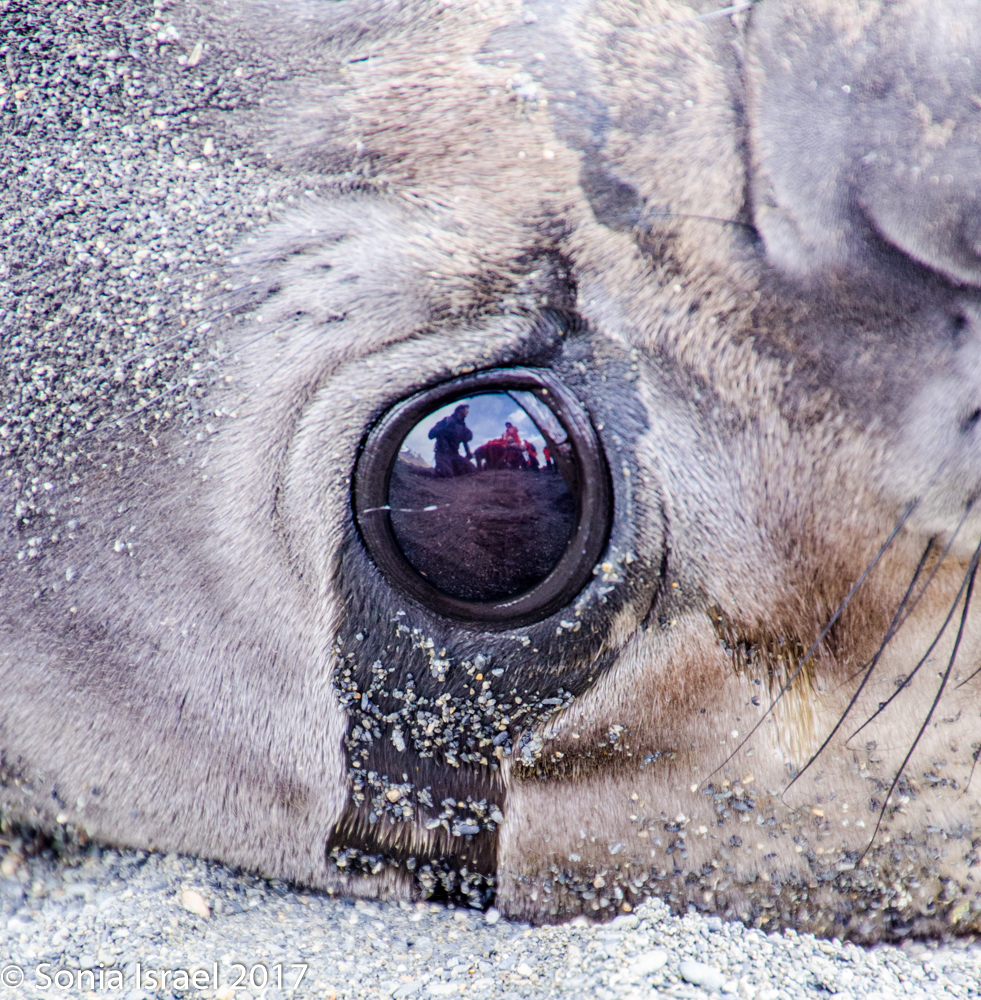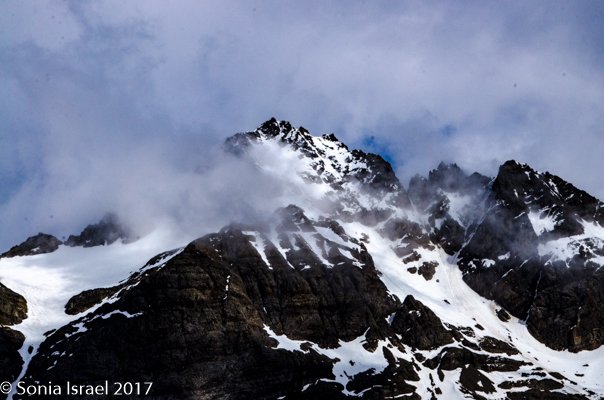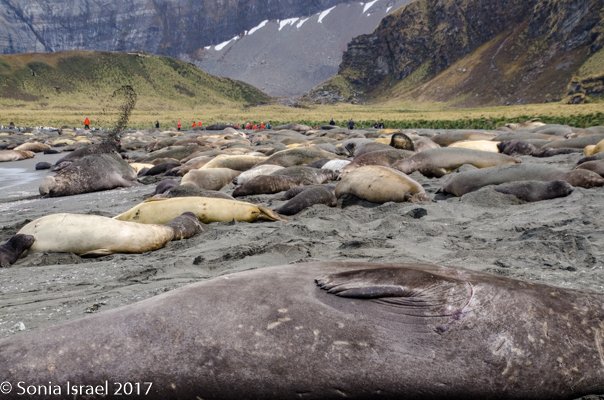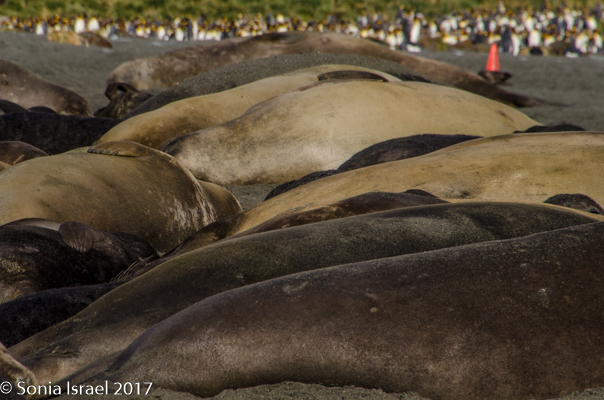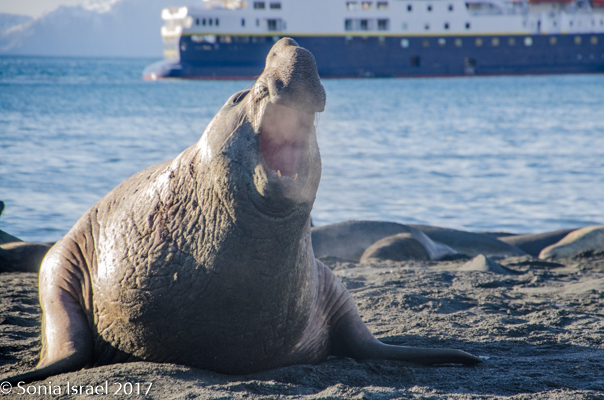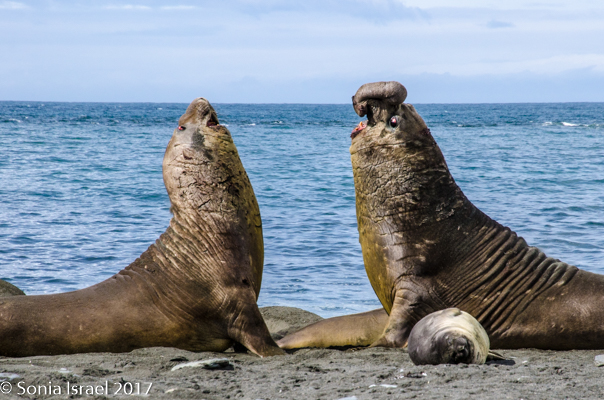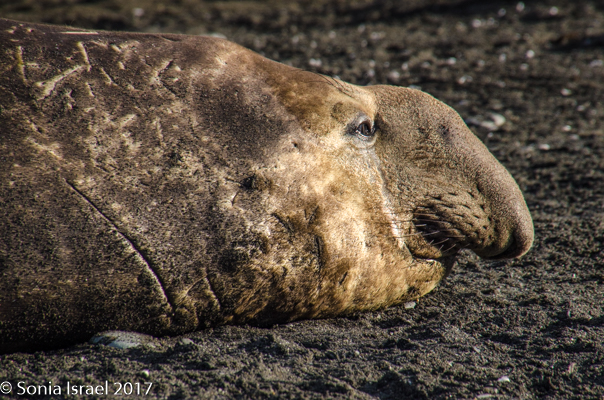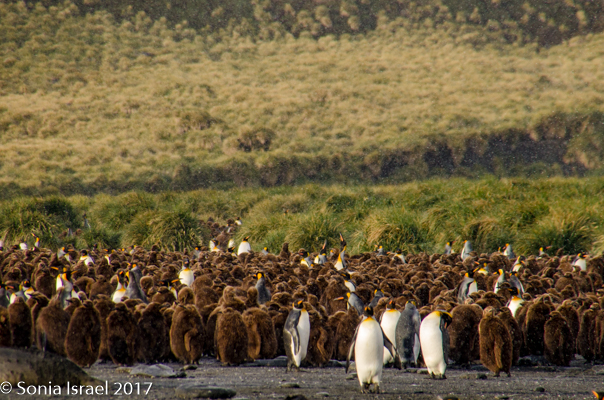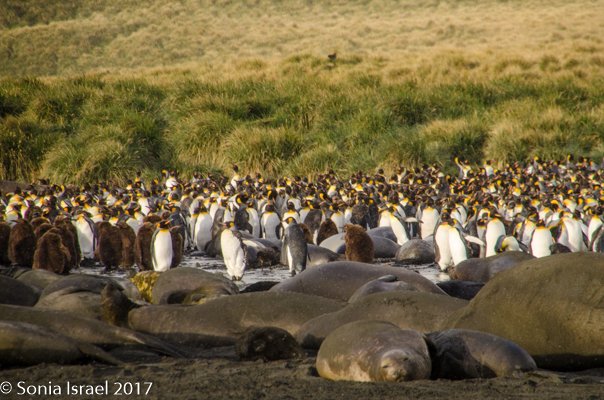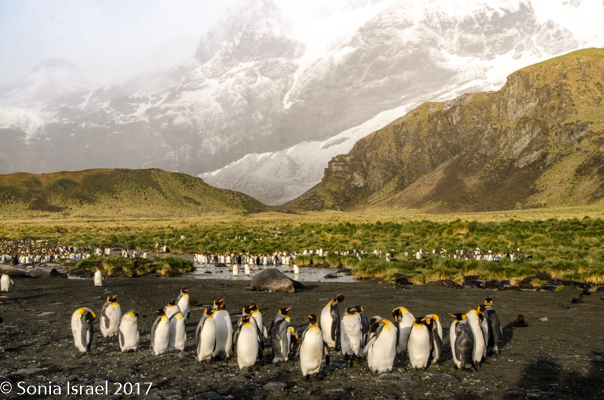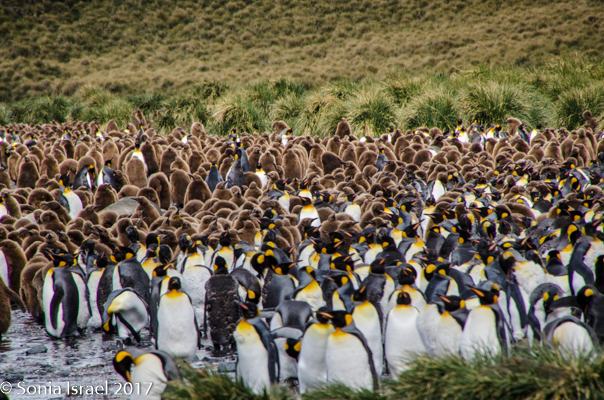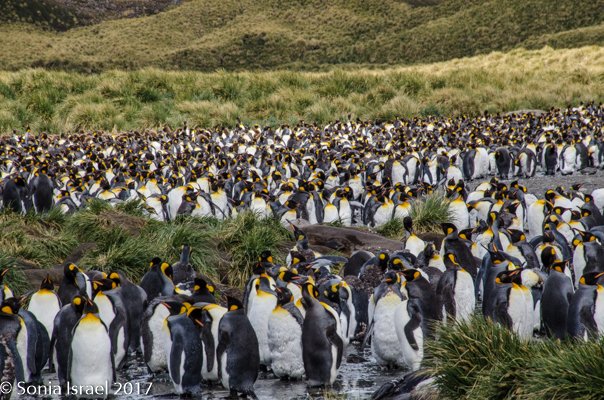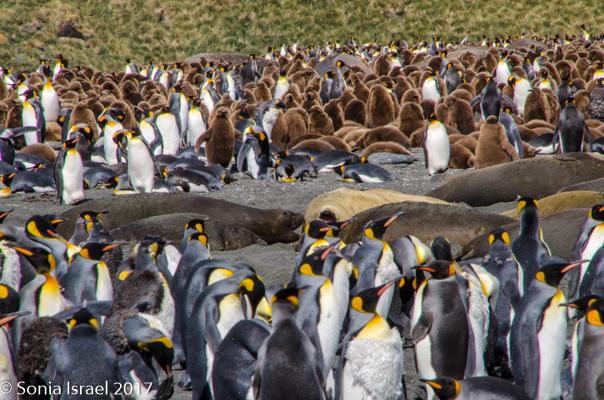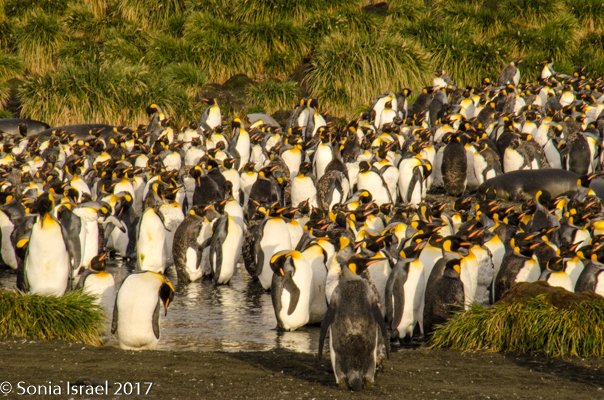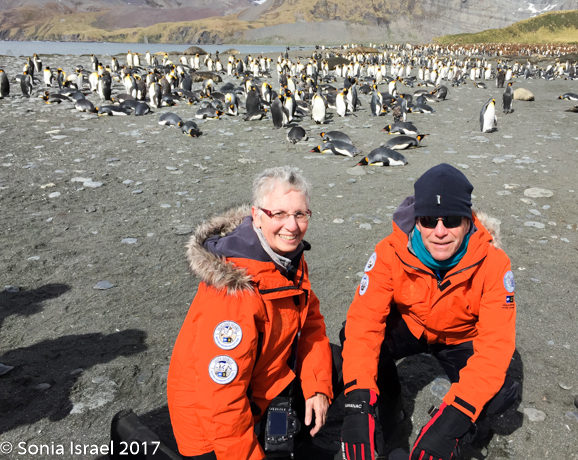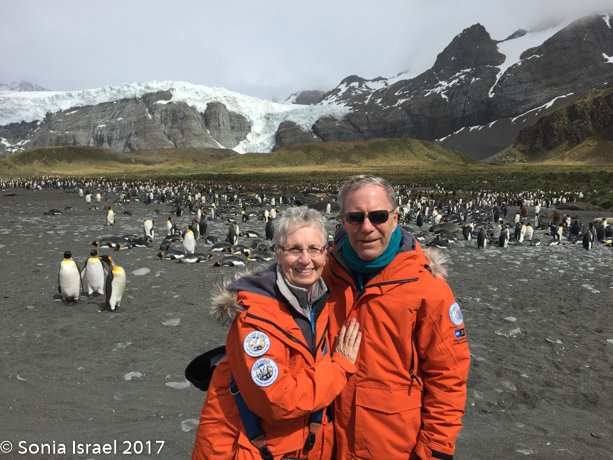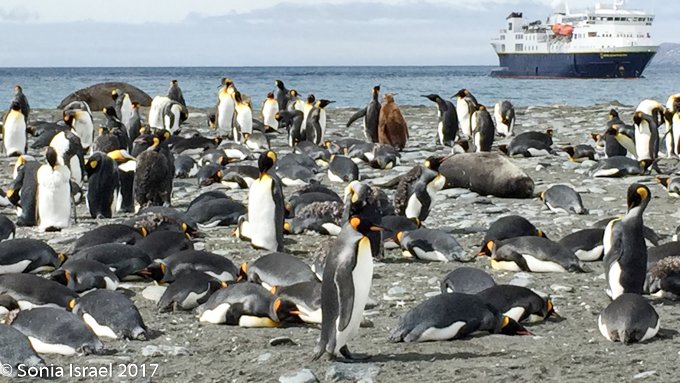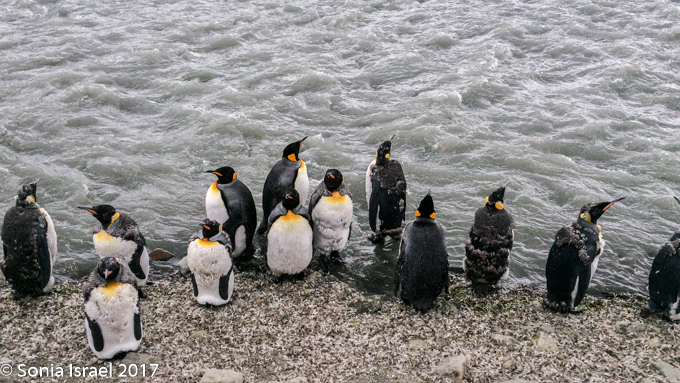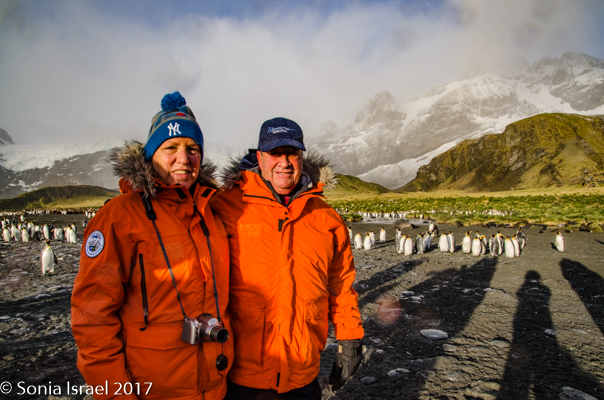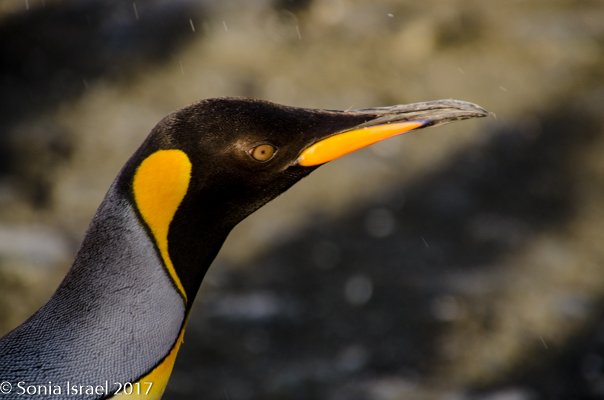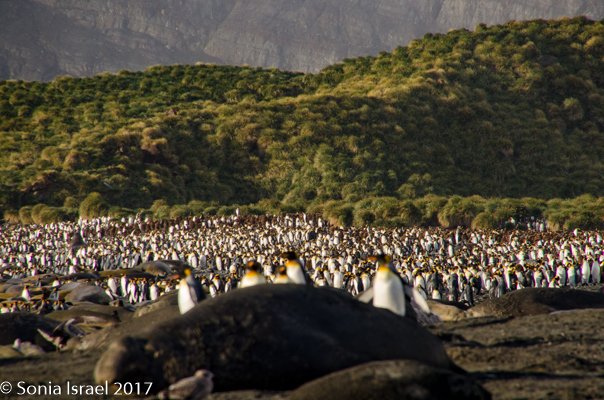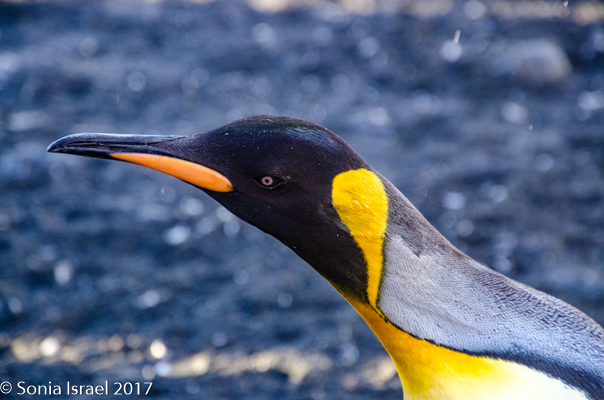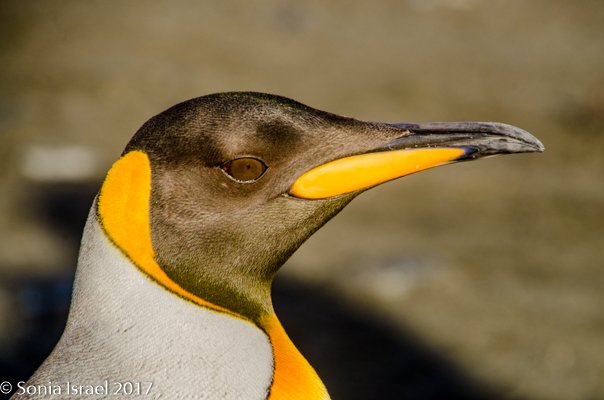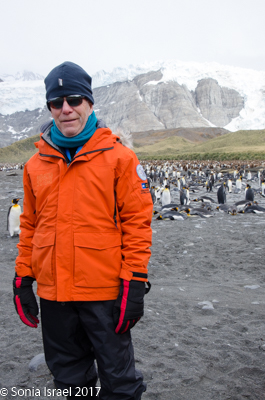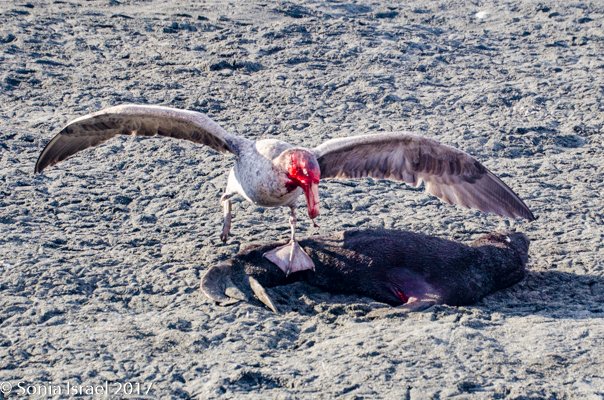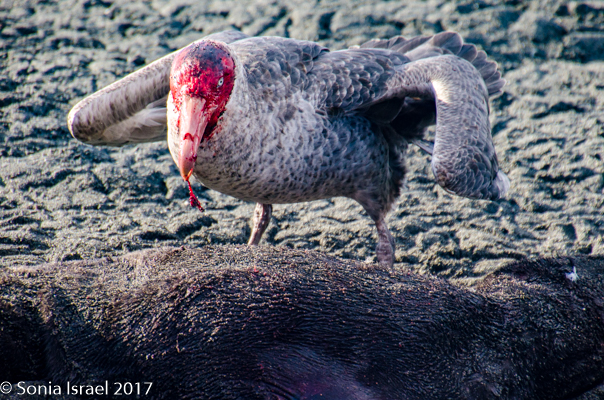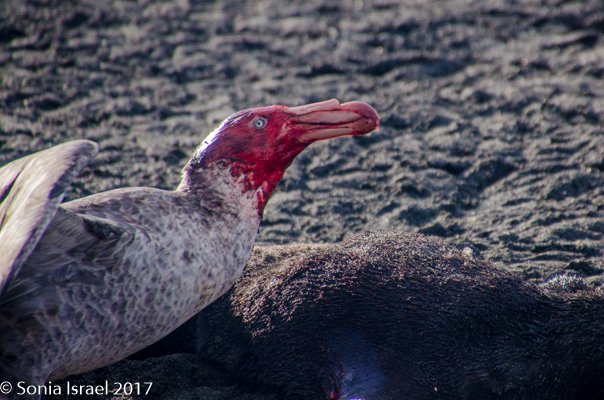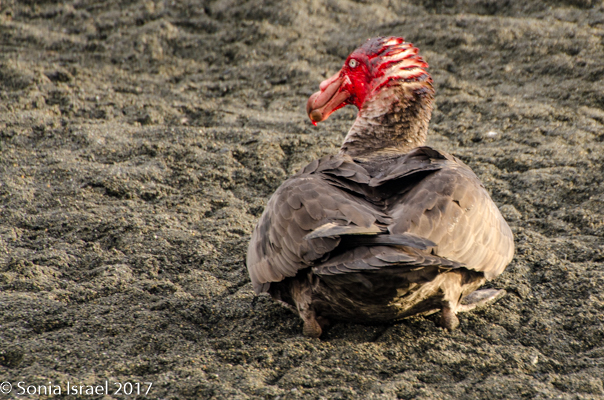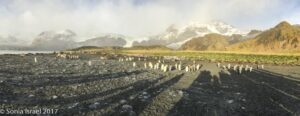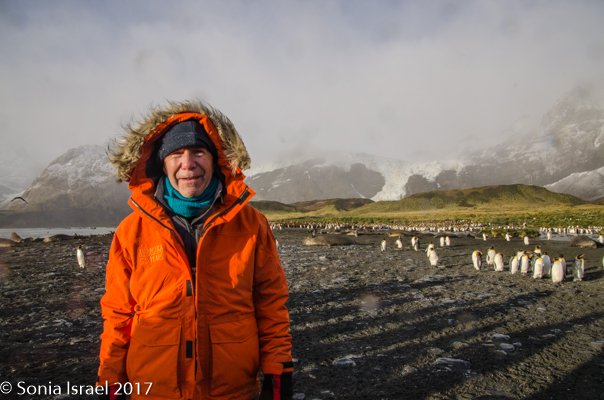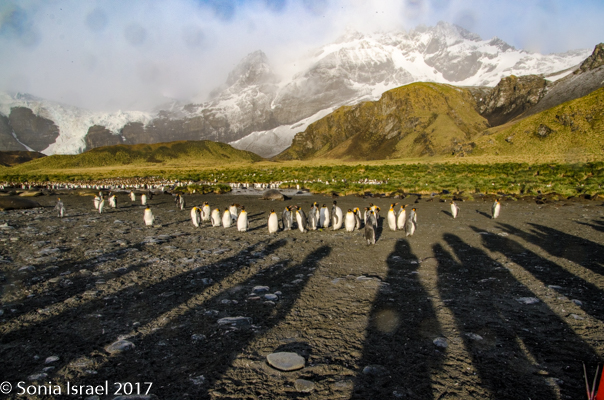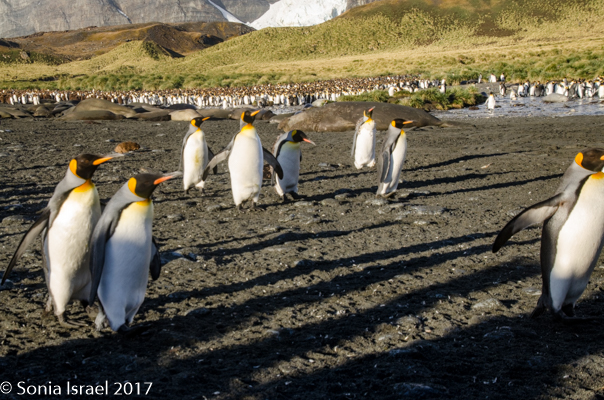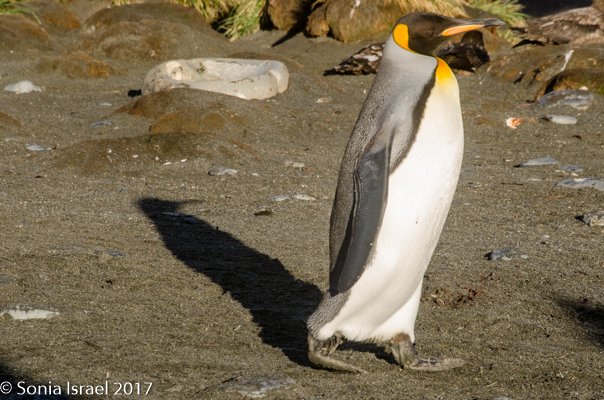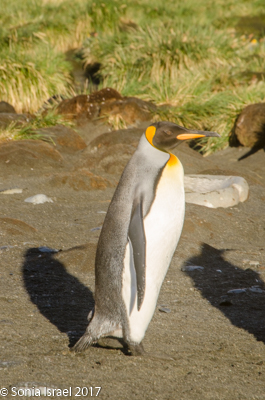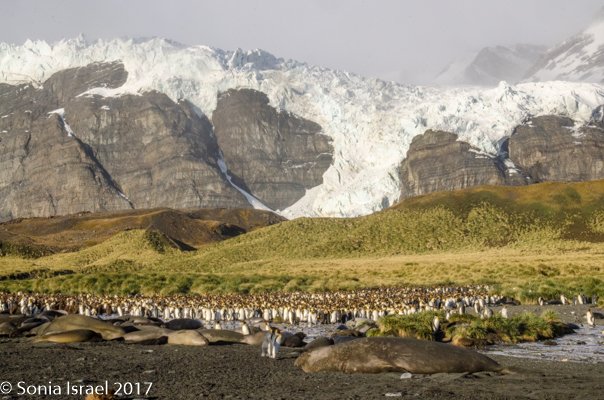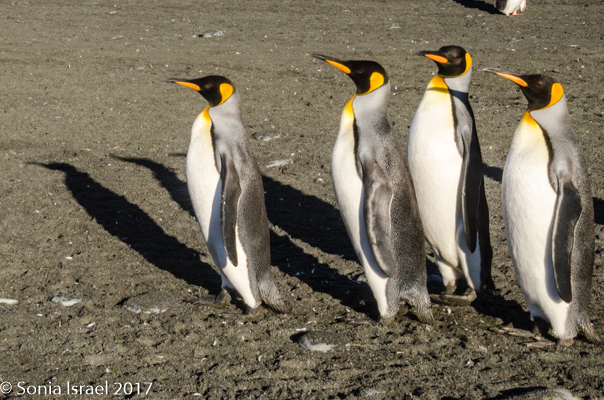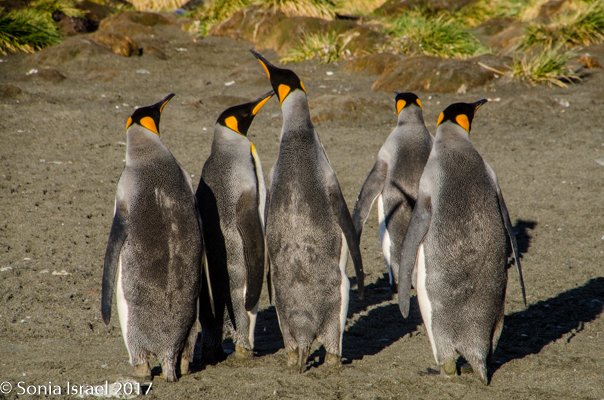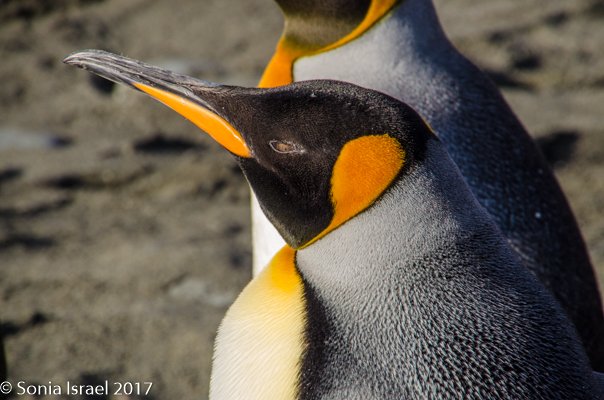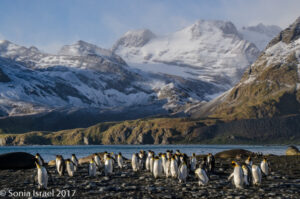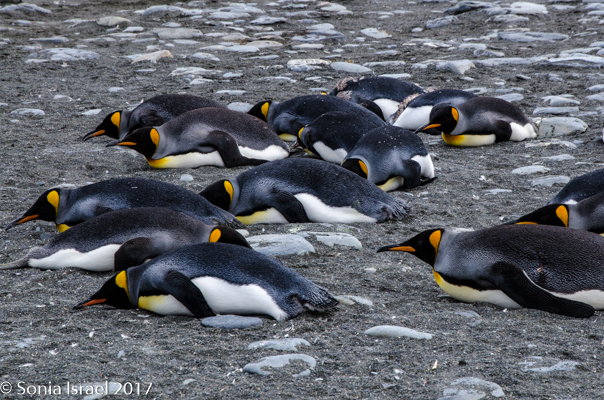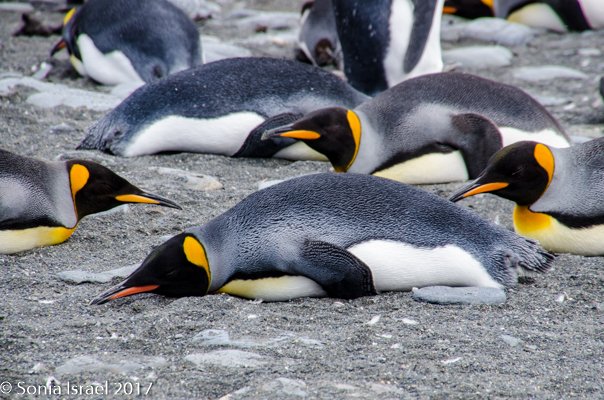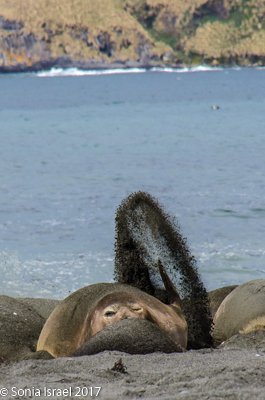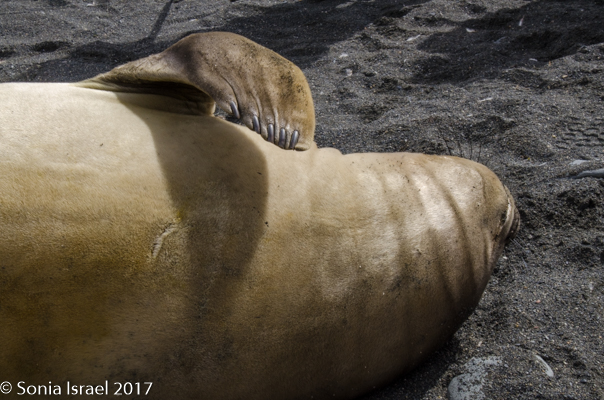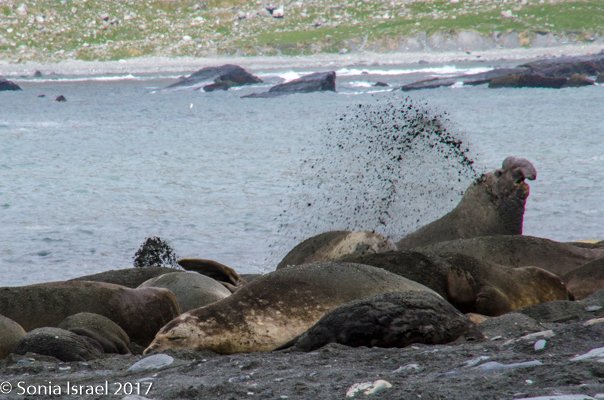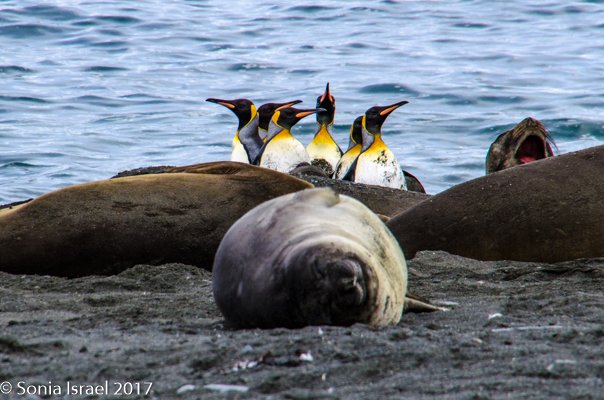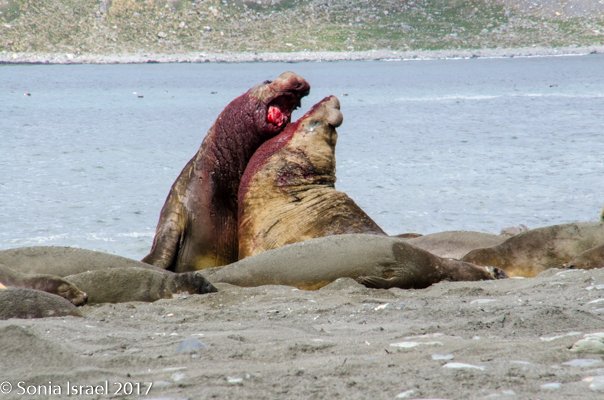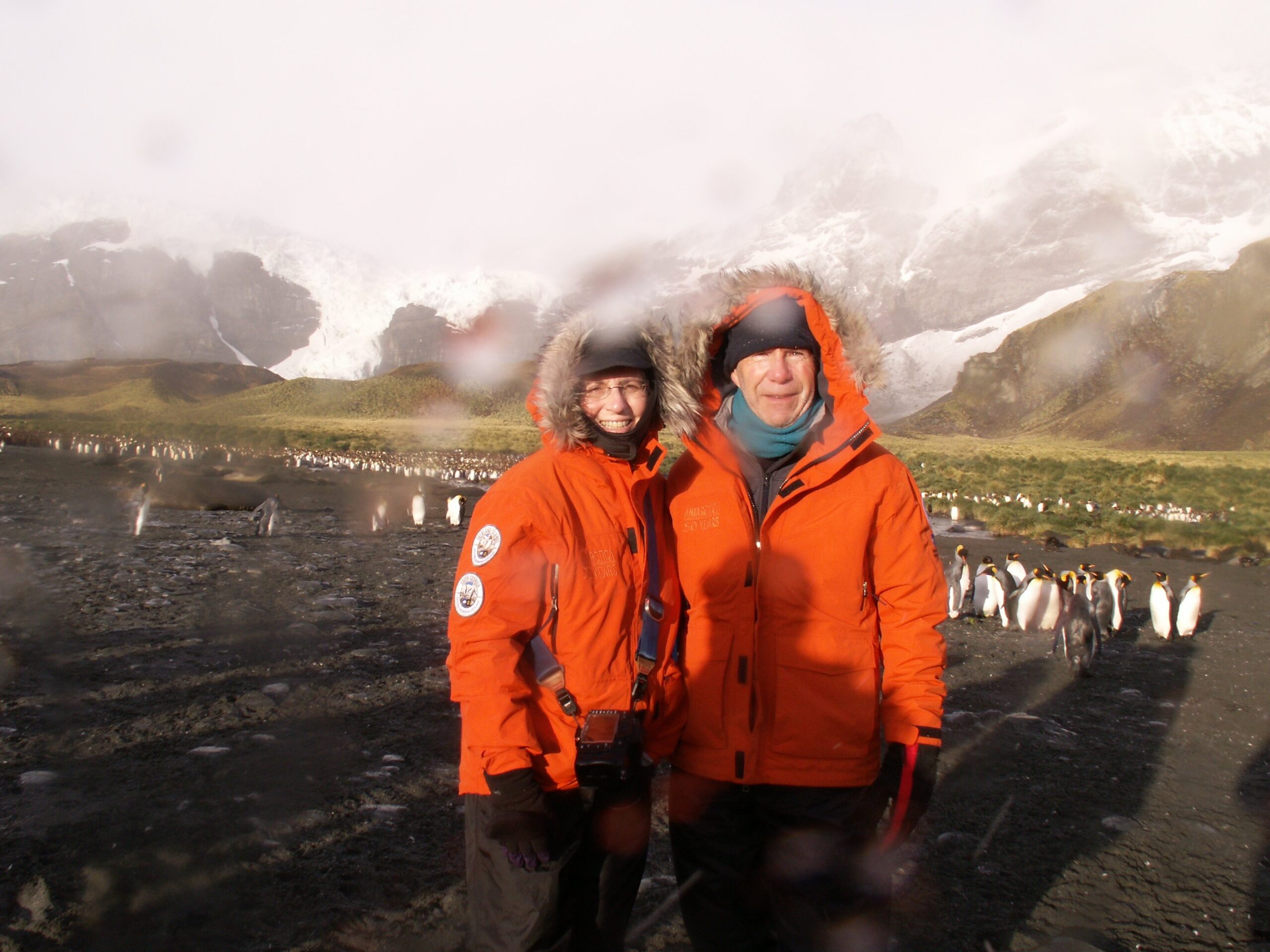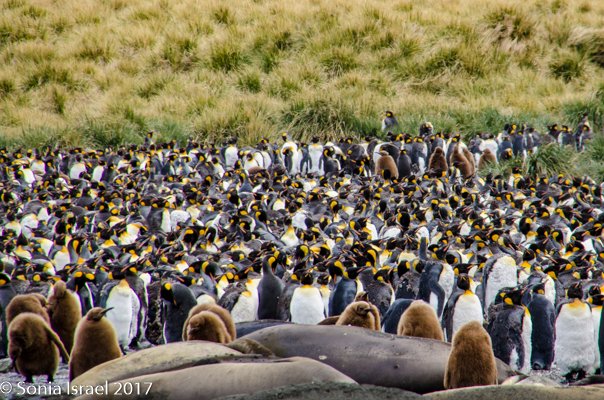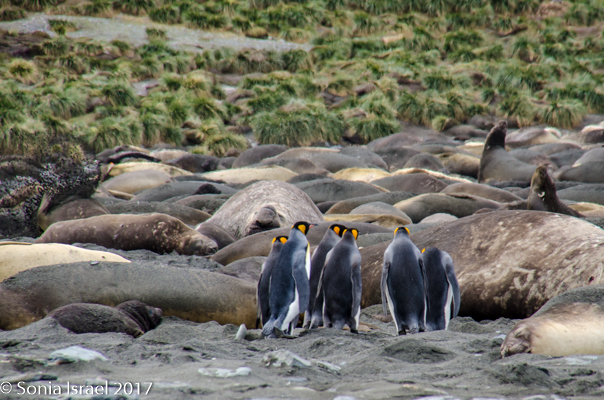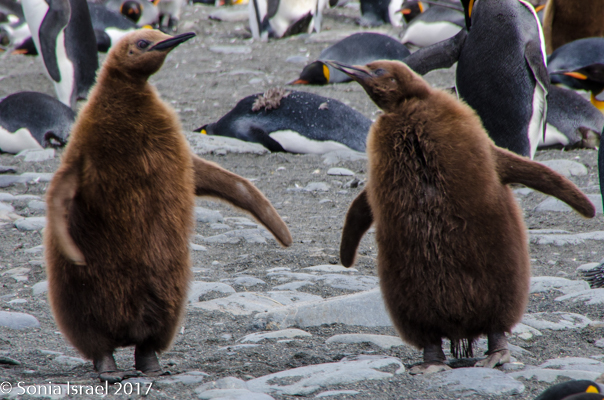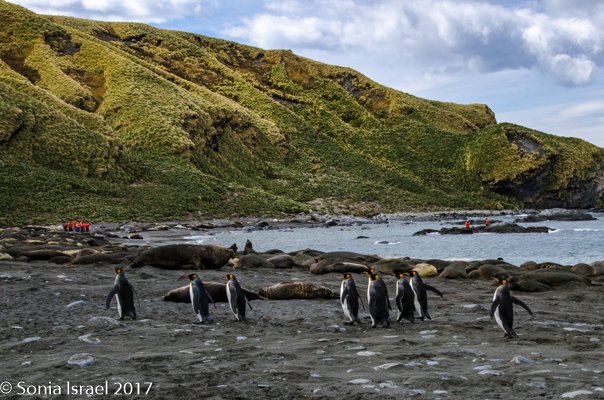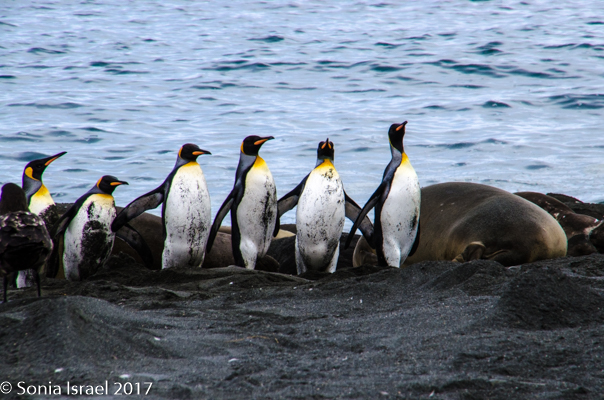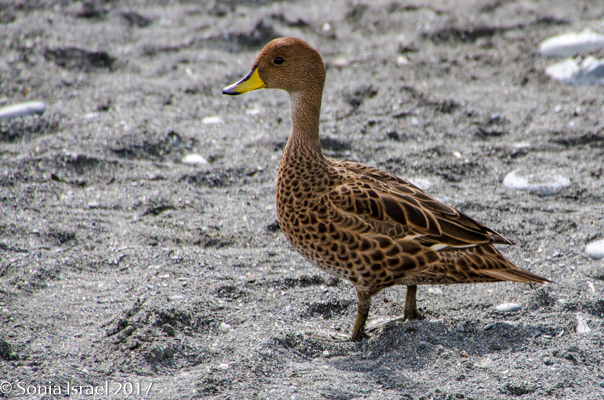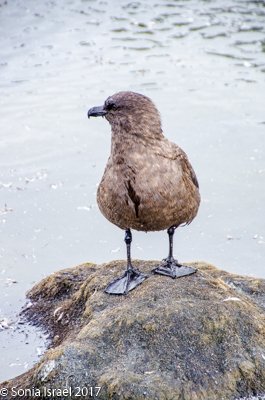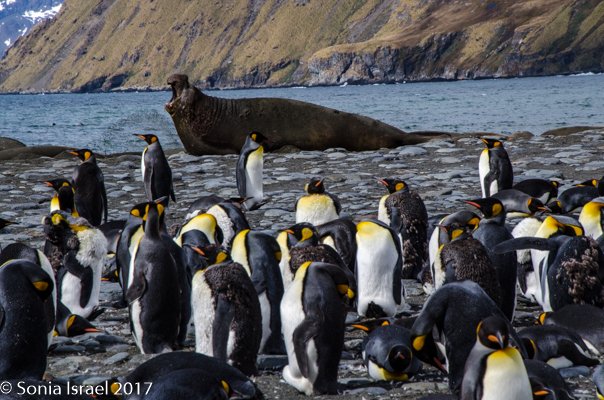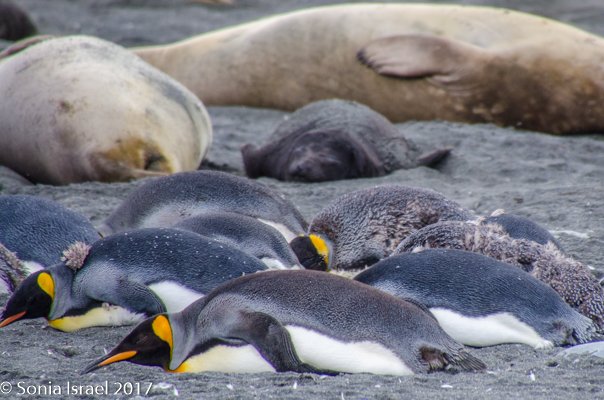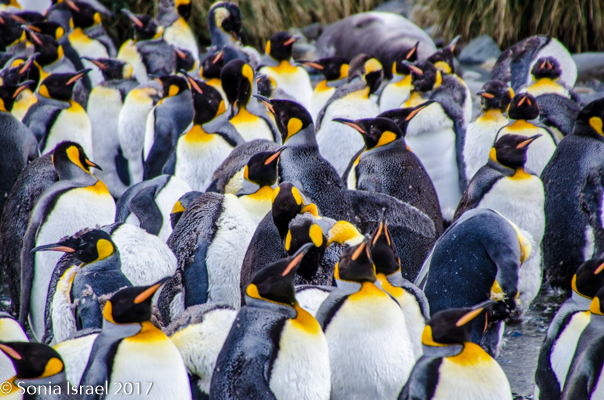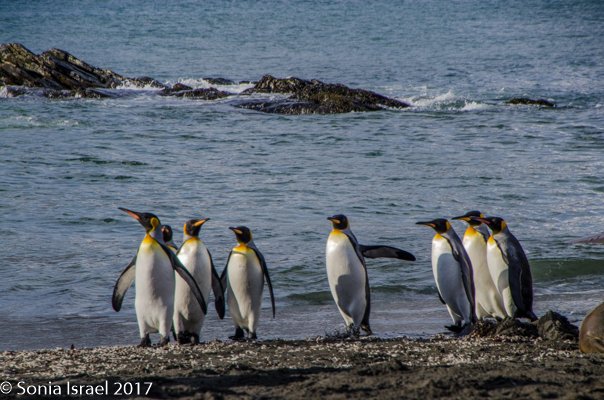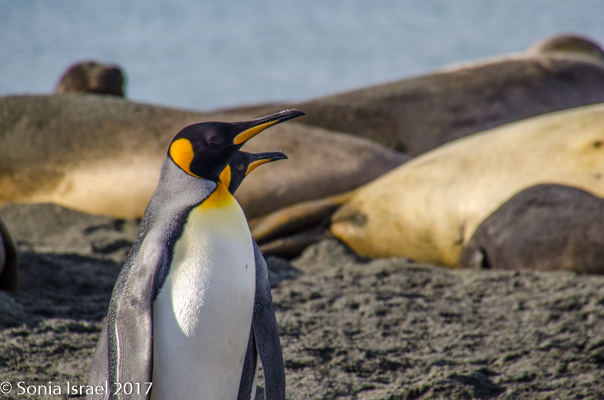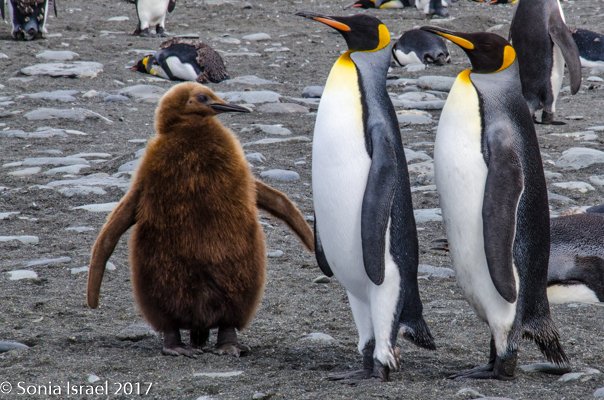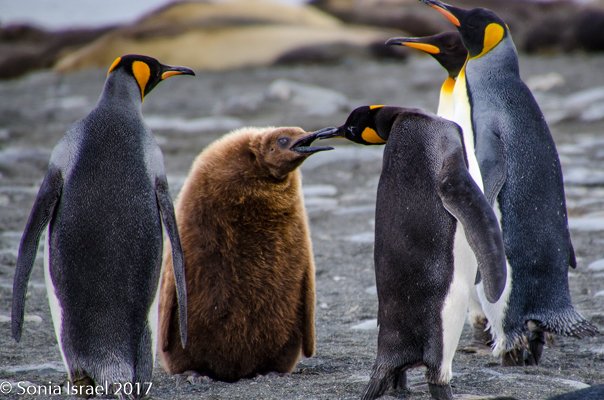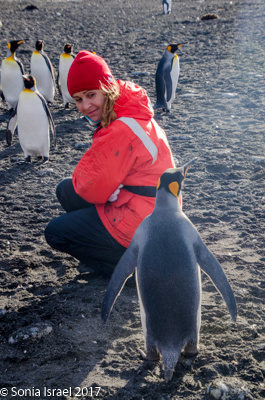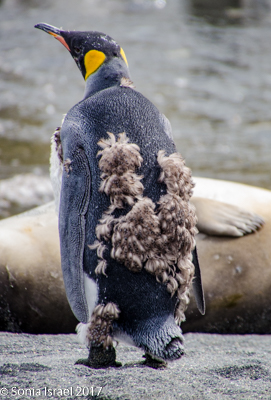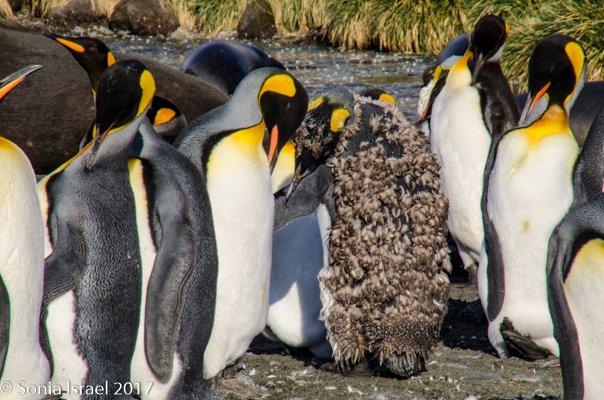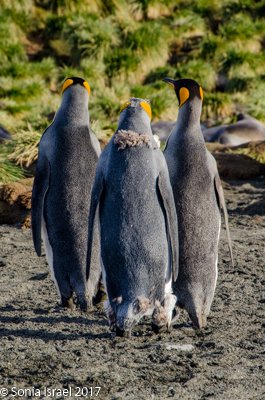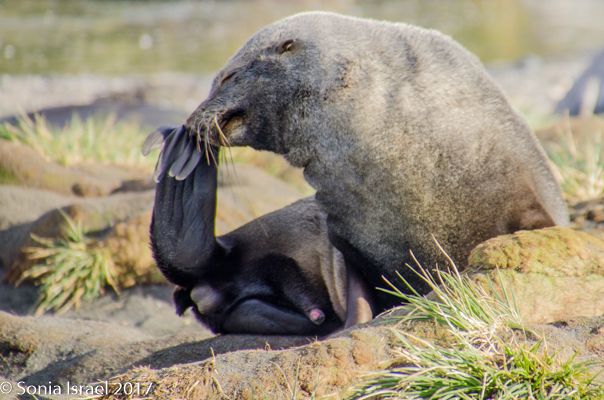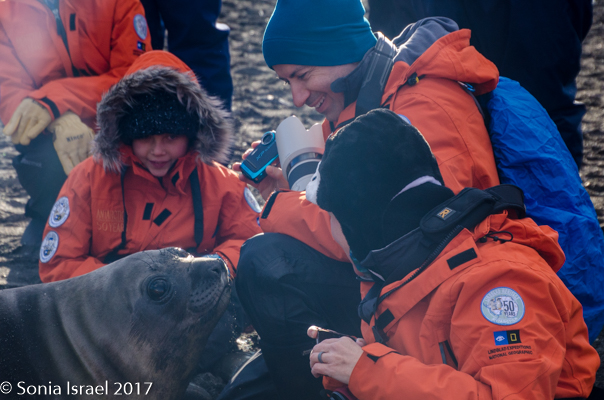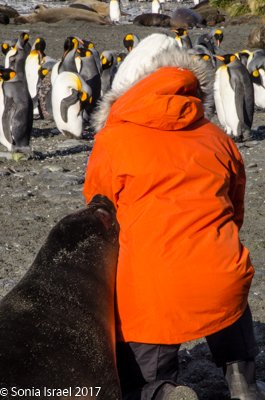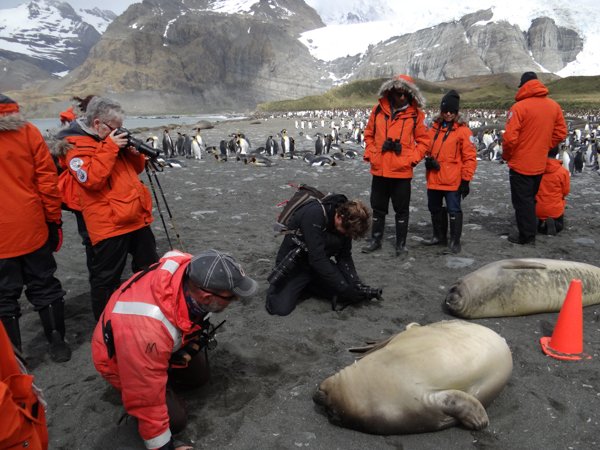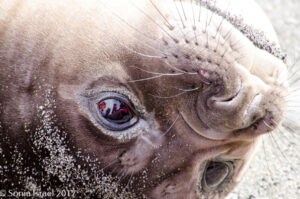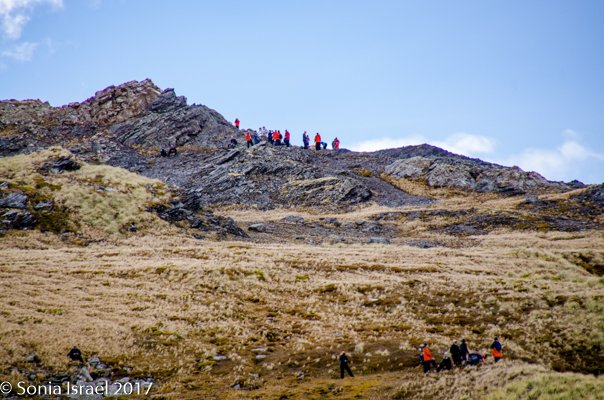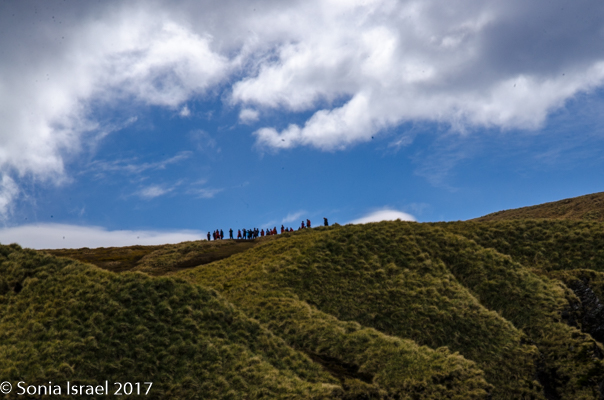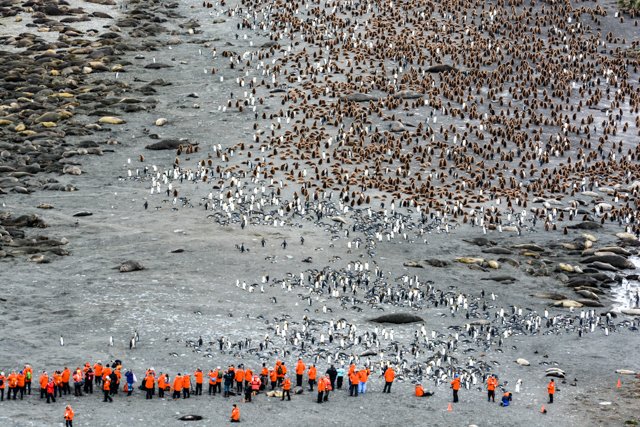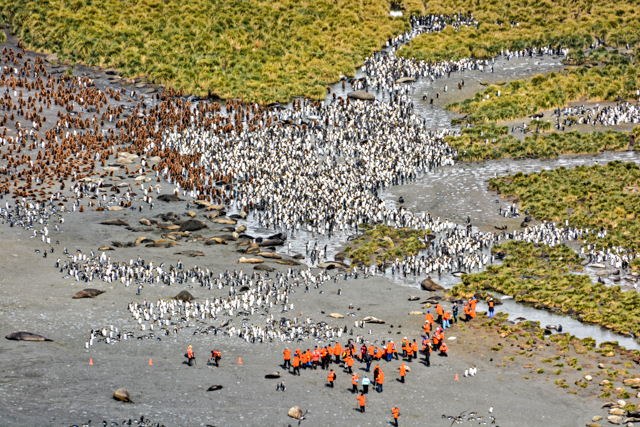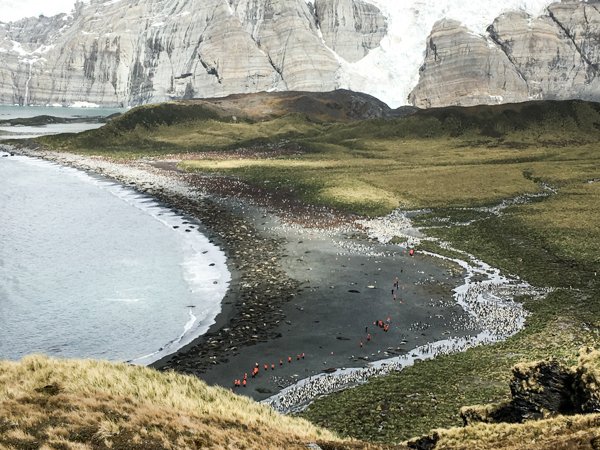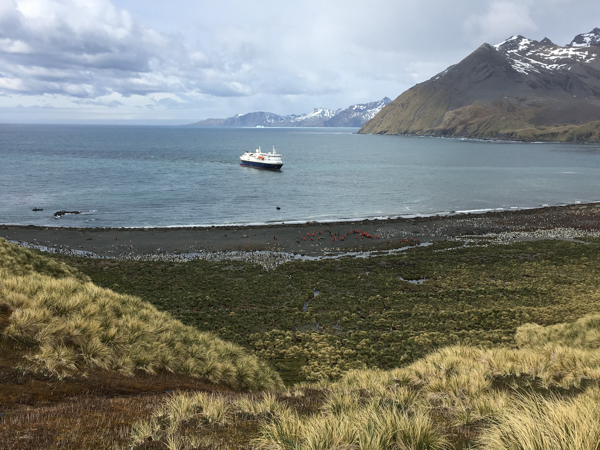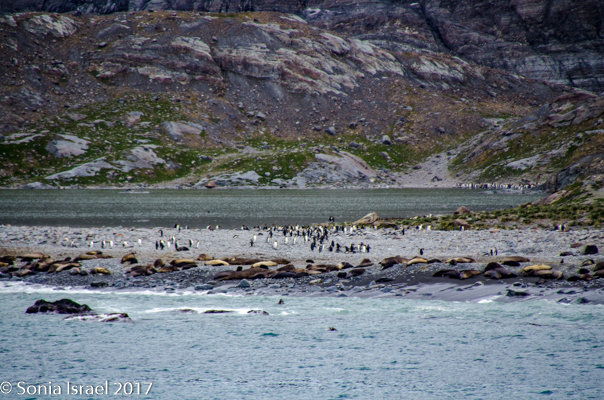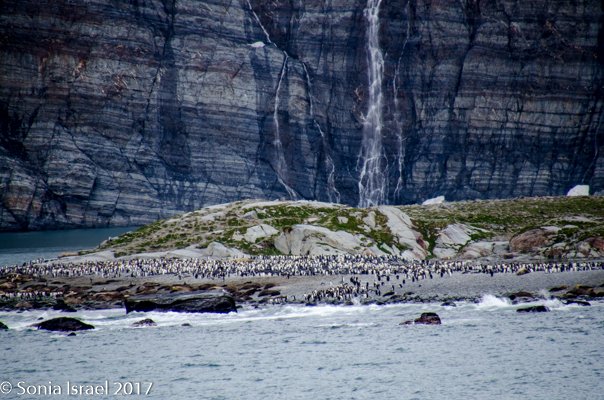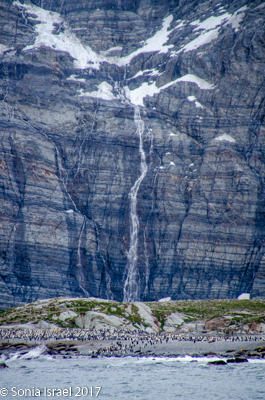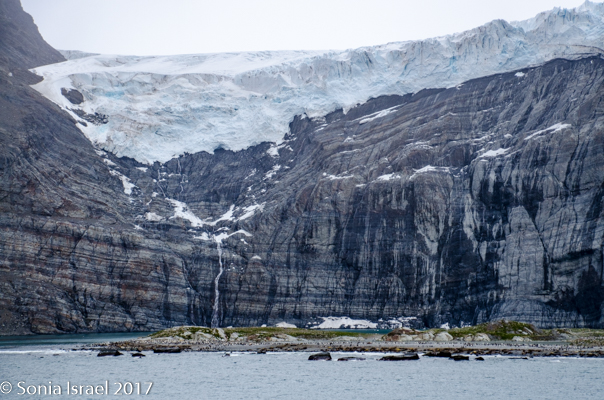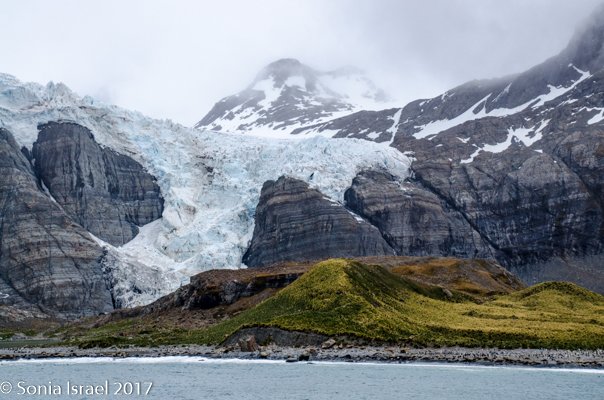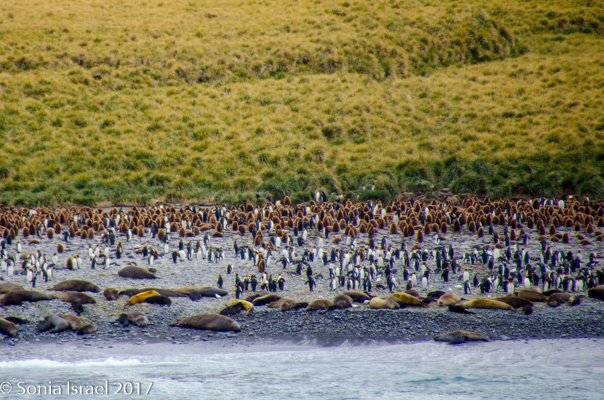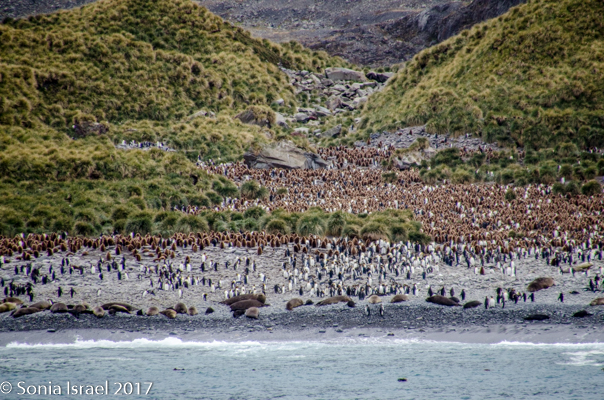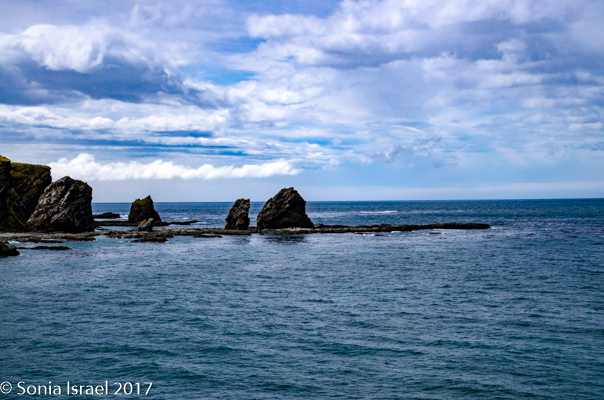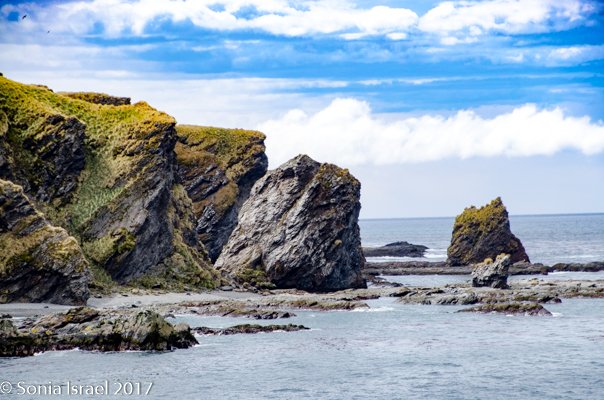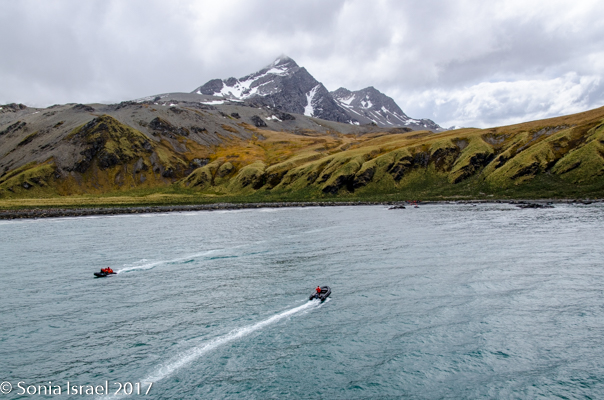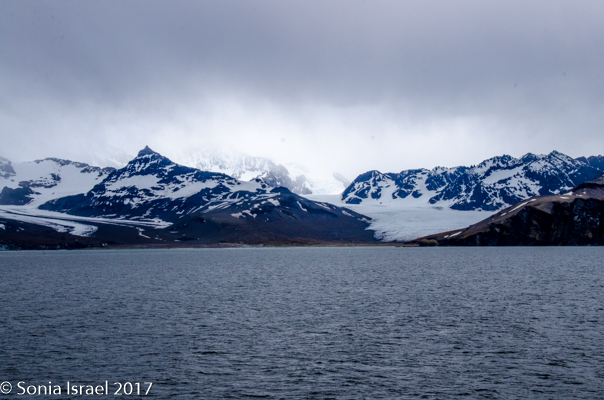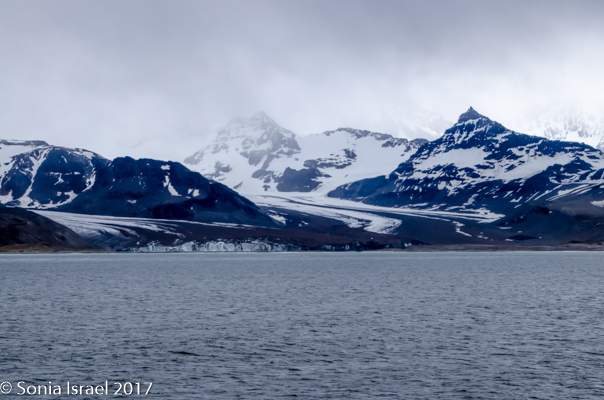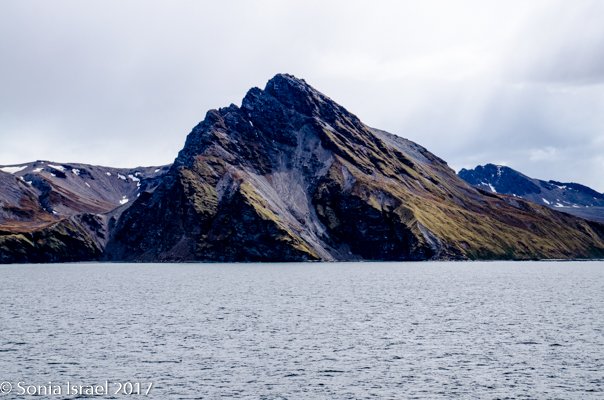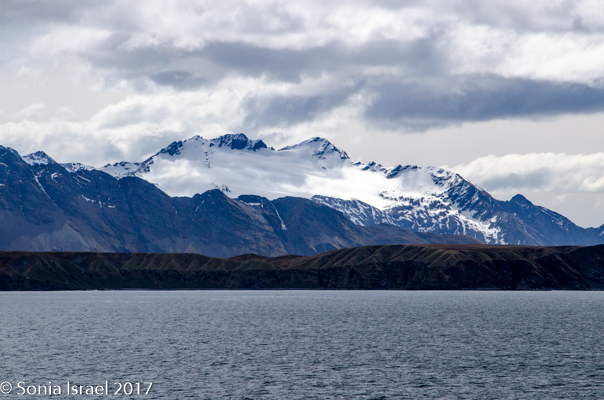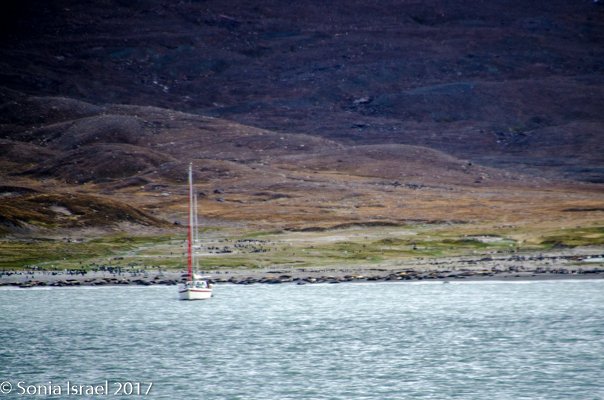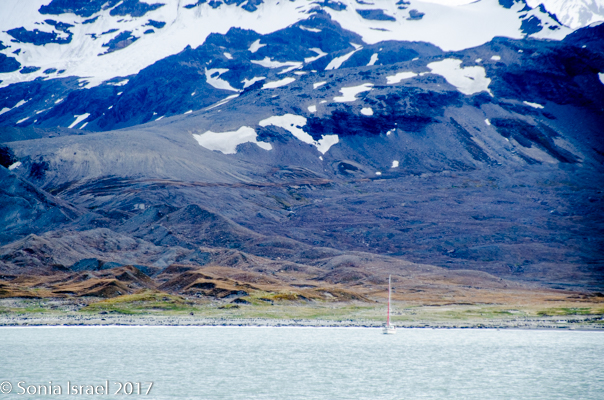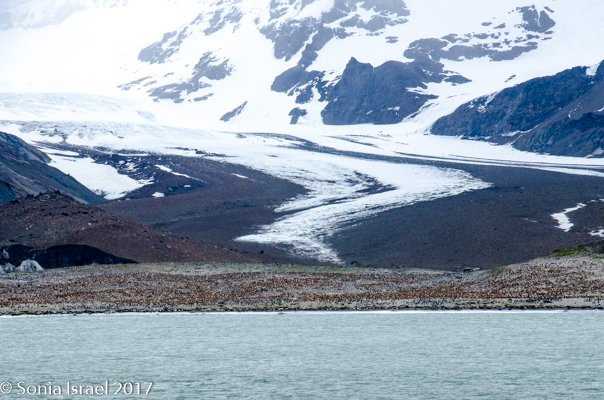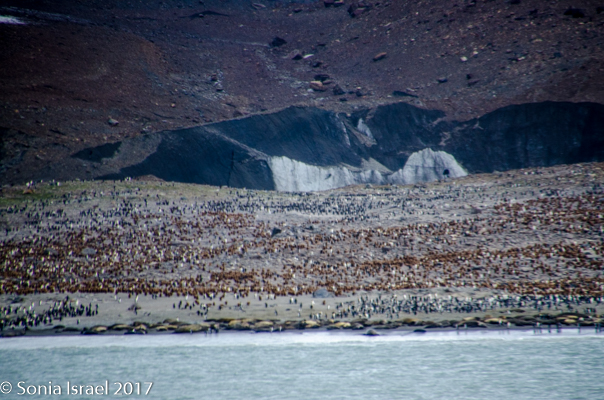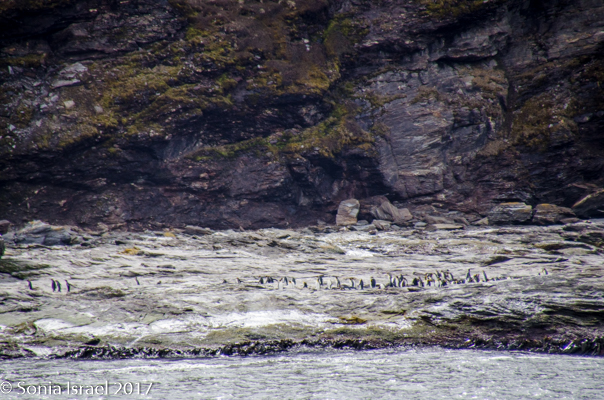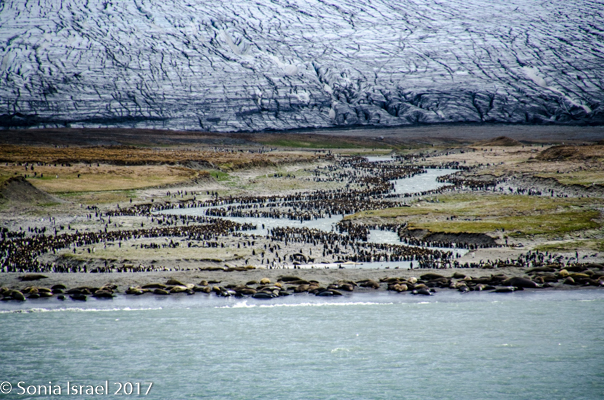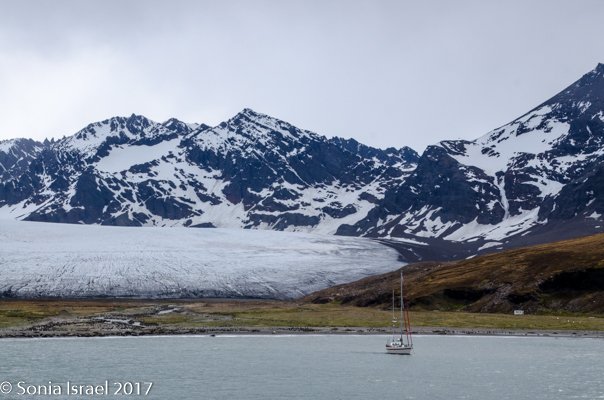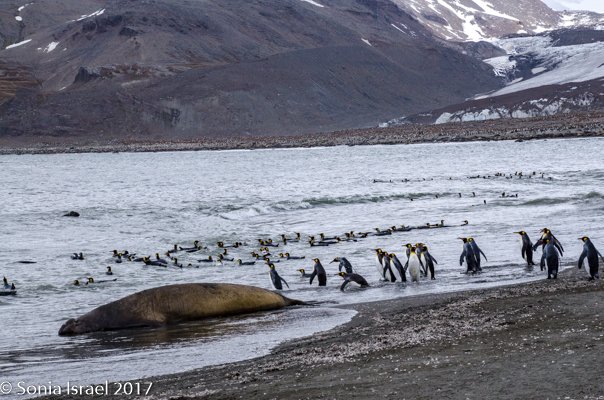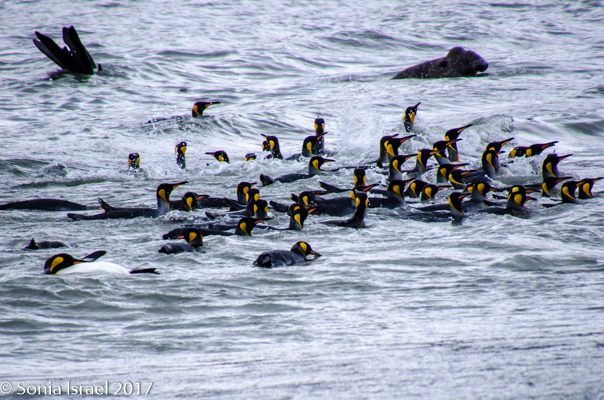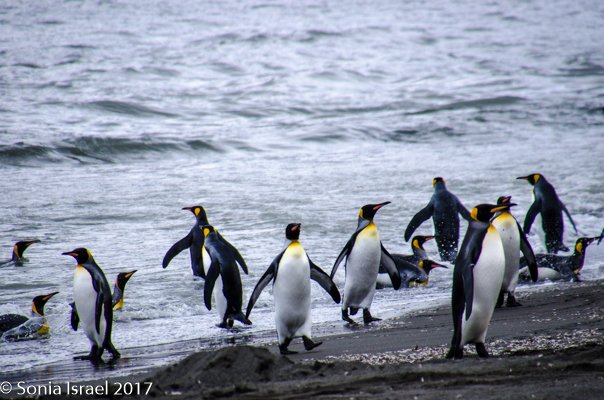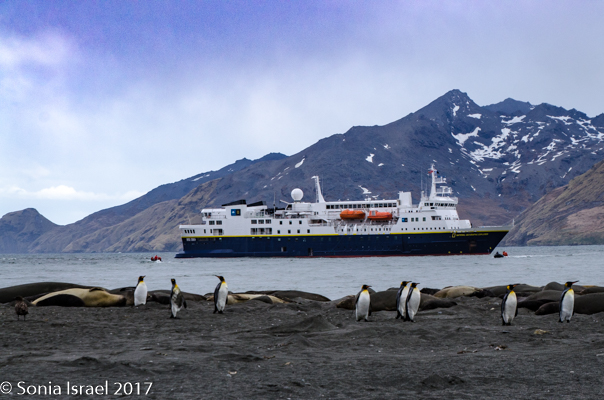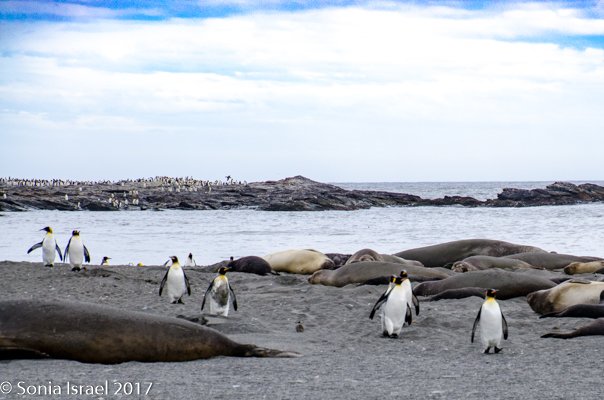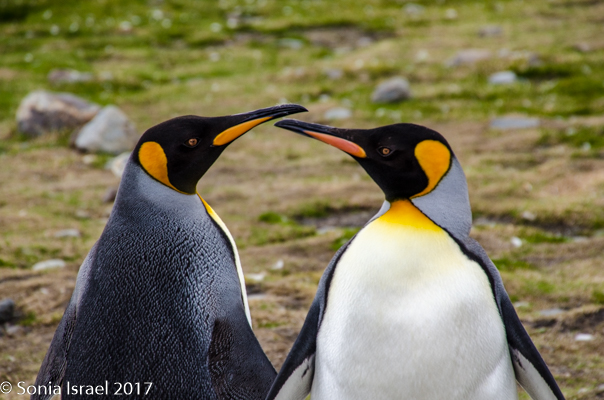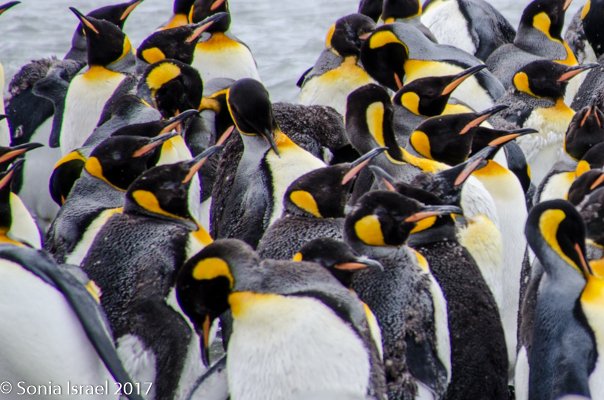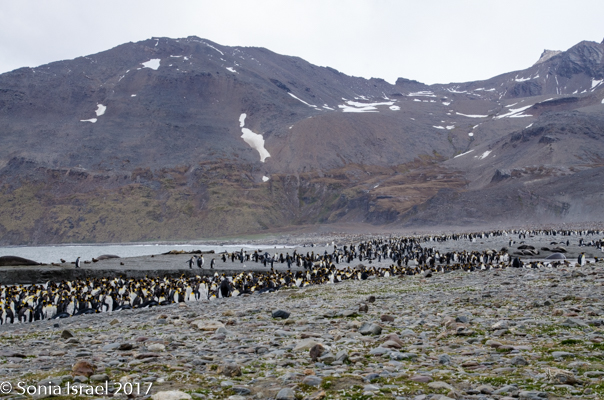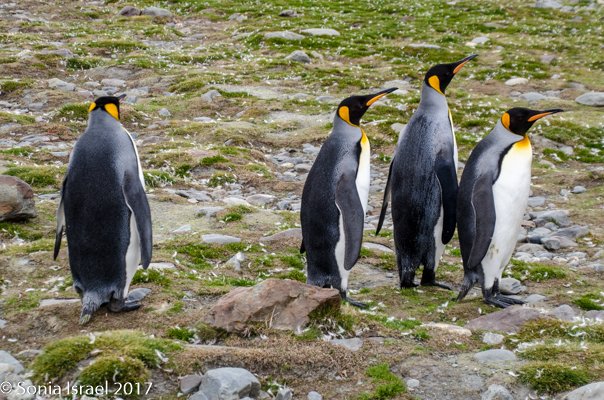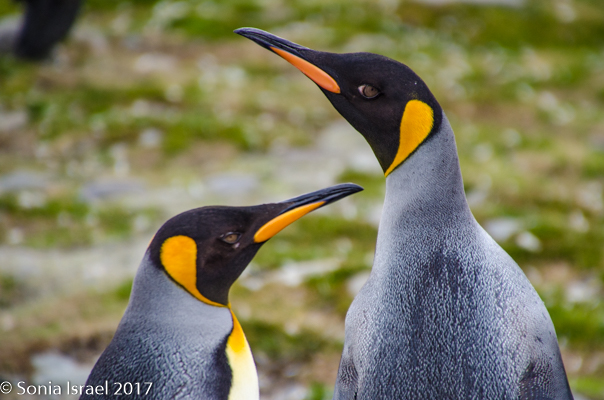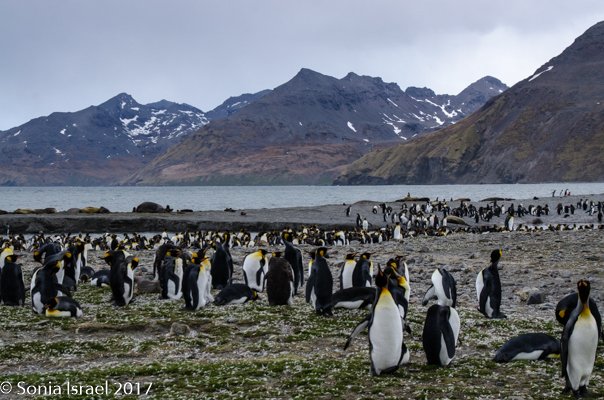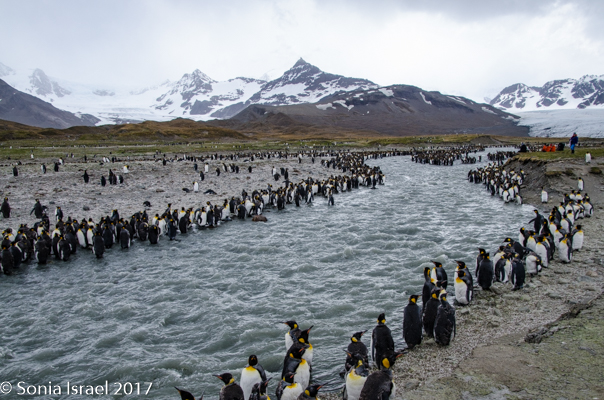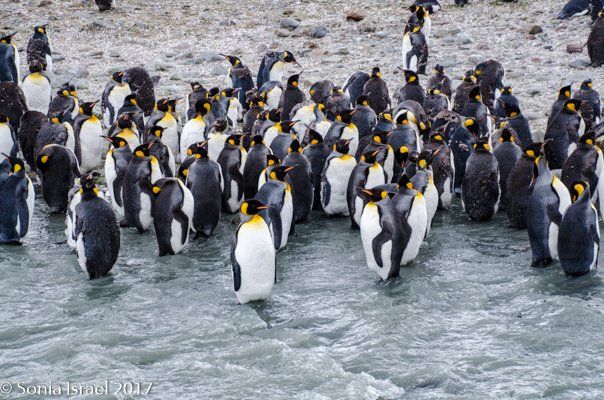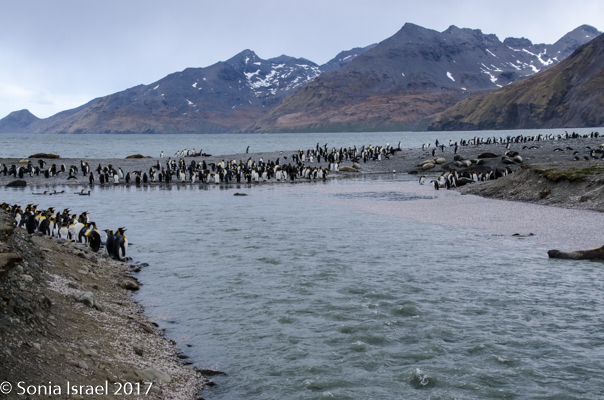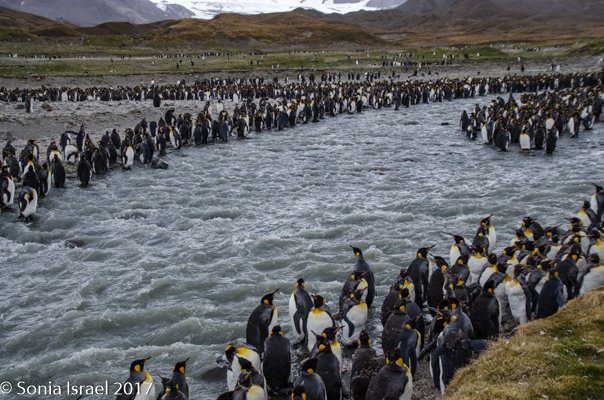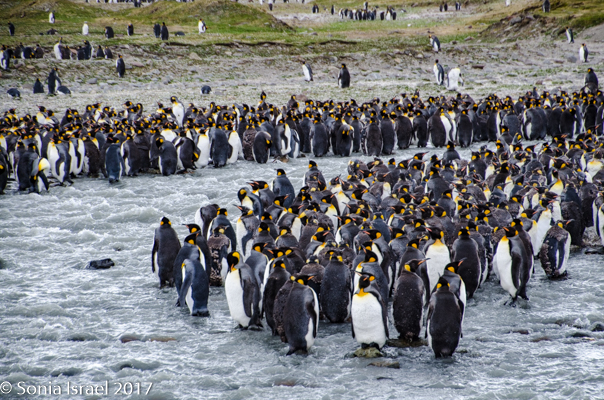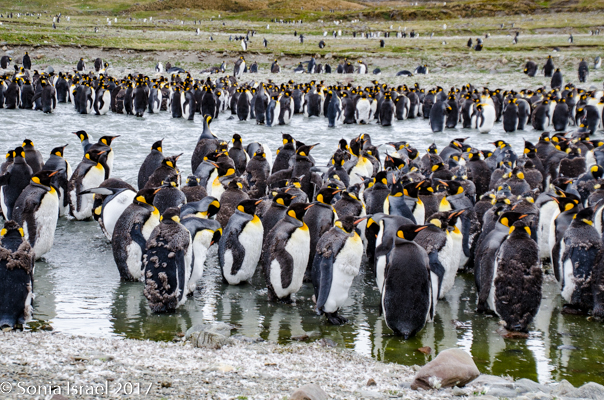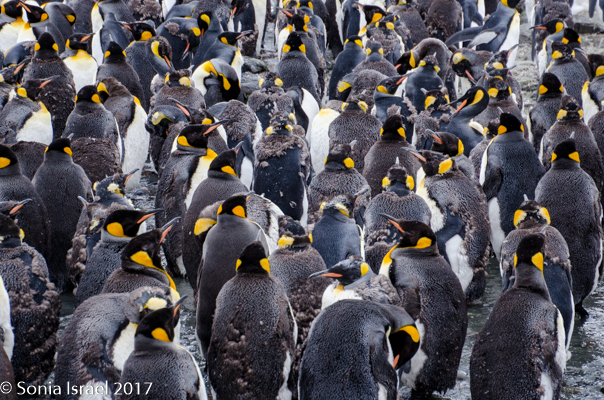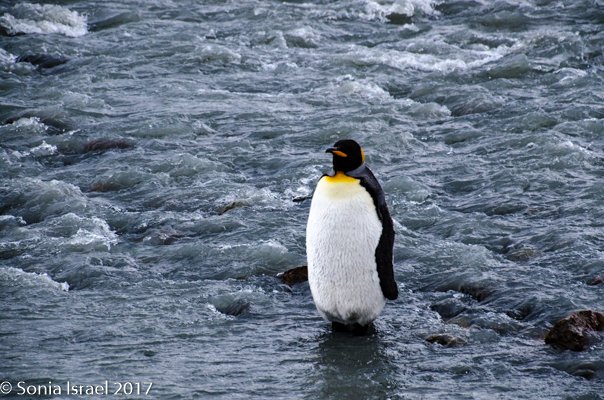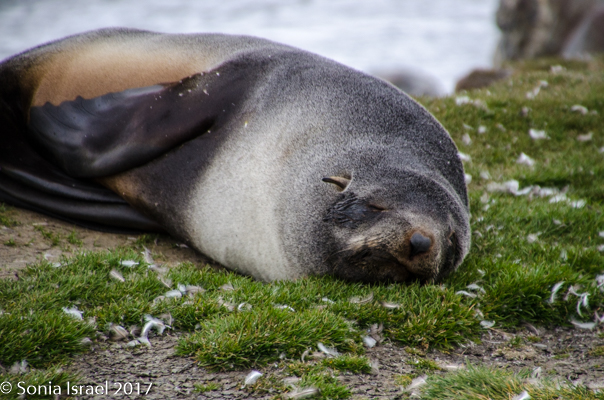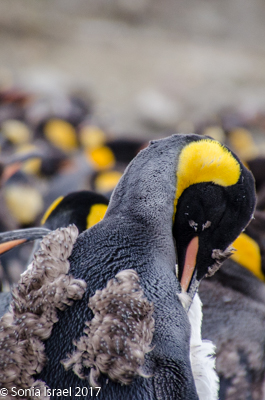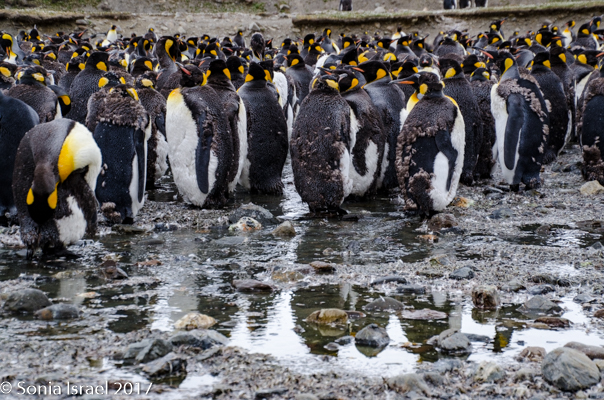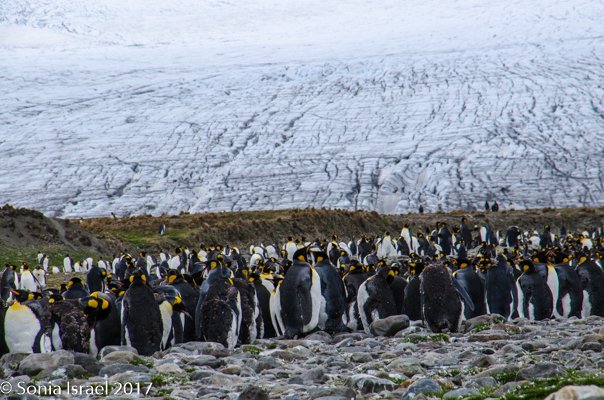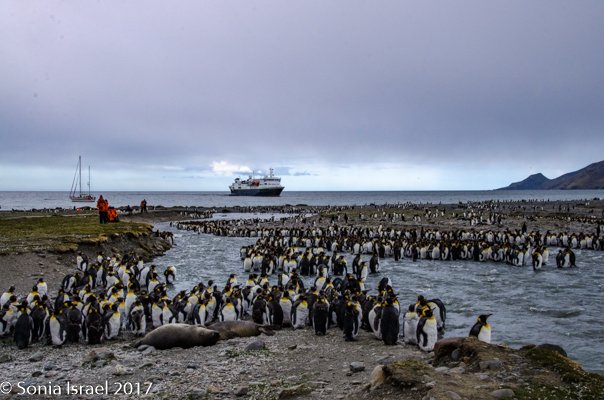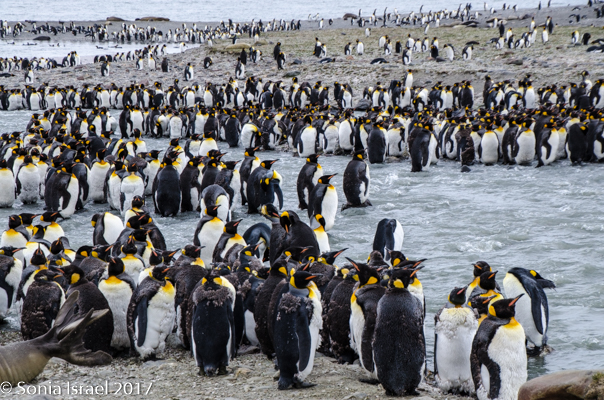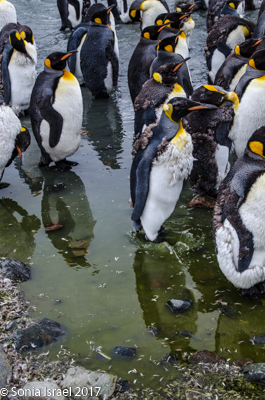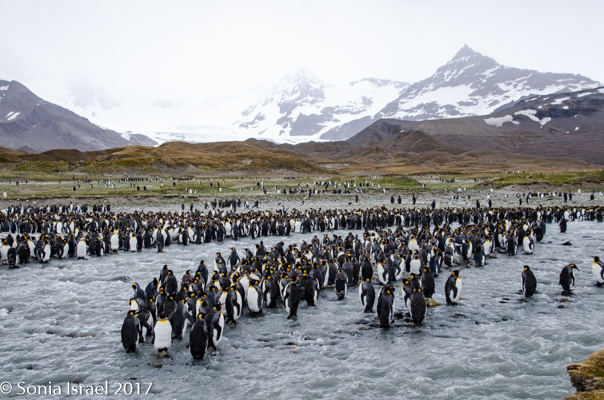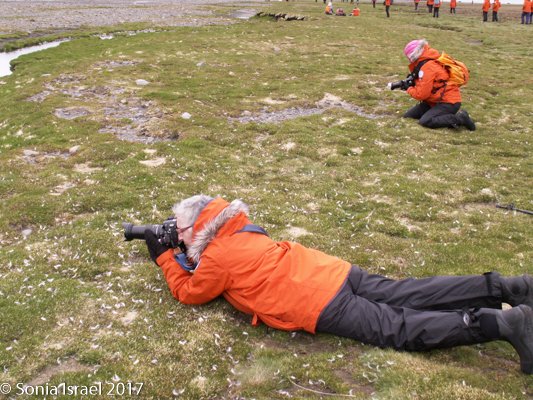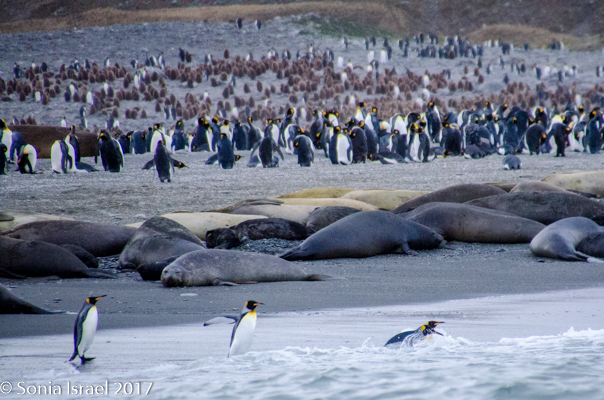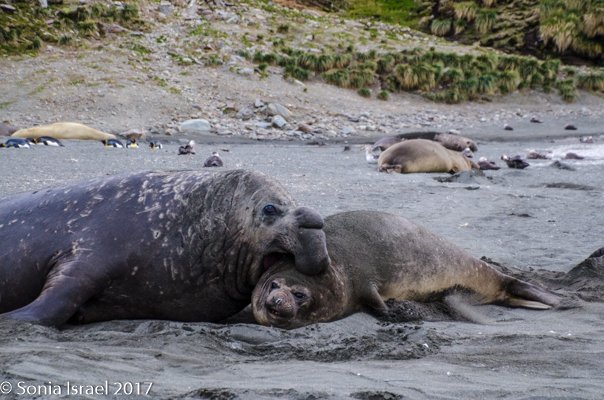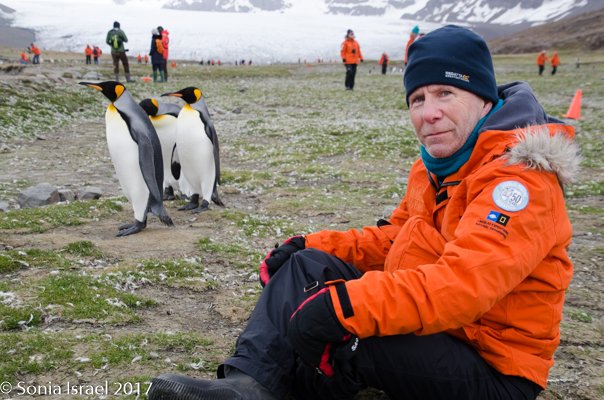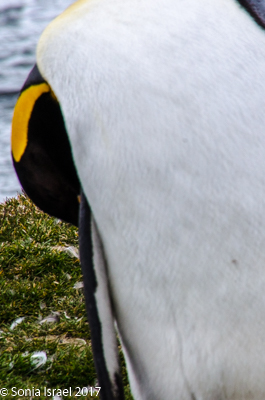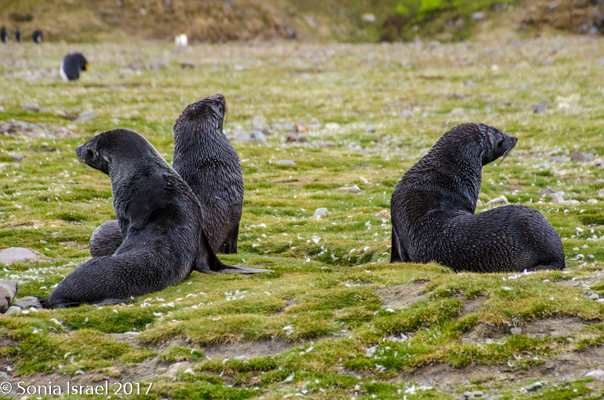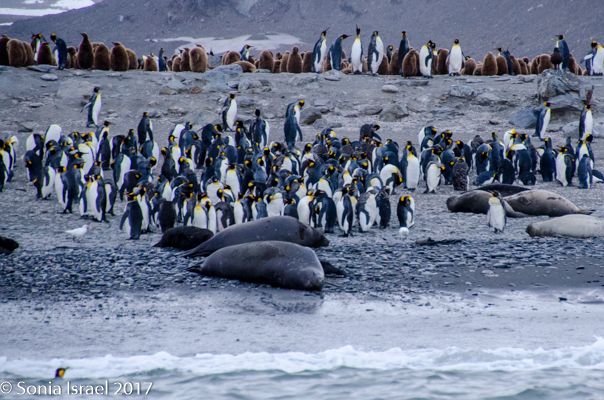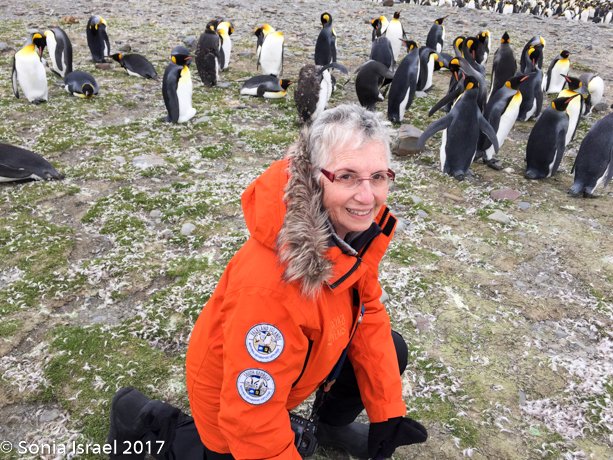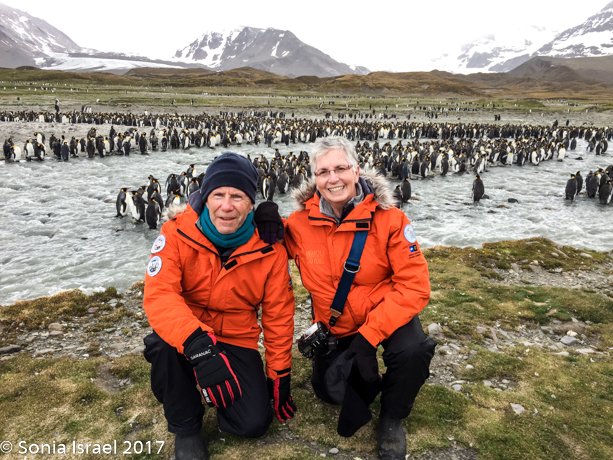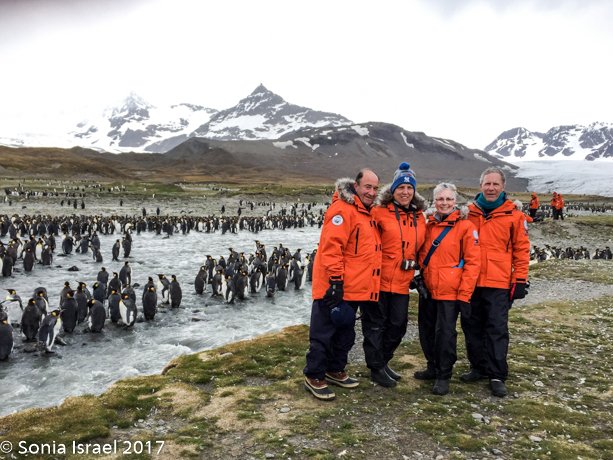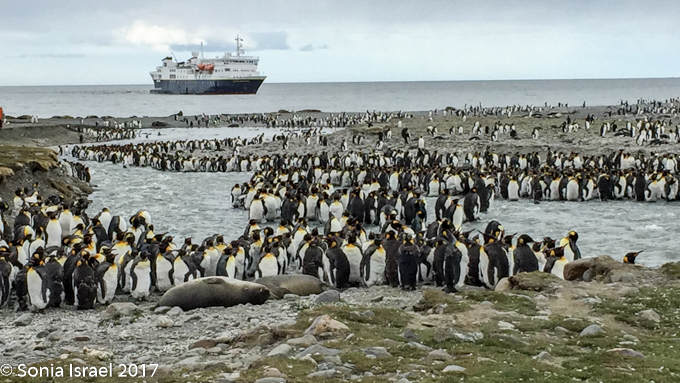November 2, 2017
Sunrise
This morning’s wake up call was at 445am. We got up quickly, put on layer after layer of clothes, grabbed our life jackets and headed out to watch the sun rise over Gold Harbor. Gold Harbor, called this because the sun’s rays make the cliffs yellow with their light in the morning and in the evening. And that’s why we got up early, to reach the beach as the sun was rising and the light was golden.
Elephant Seals
As the zodiac made its approach to land all we could see was a blanket of elephant seals. Big alpha males. Big beta males and lots and lots of females. This is a good point to talk some more about the elephant seals. People think about penguins when they think about South Georgia. And of course, there are hundreds of thousands of King penguins here. But there are also thousands of elephant seals, and you almost always seem to find the Kings and the Elephant seals together. Elephant seals, also called sea elephants, are named for their trunk-like nose, which only develops when they are about 8 years old. The males can be 14 feet long and weigh over 4000 pounds! The females grow to be 9 feet long and 1320 pounds. So, basically, they are the largest pinnipeds. When I said they were big, I meant it! The pups are born at 100 pounds.
The bull, or male elephant seal, comes ashore in August to September to start creating a territory for what will be their harem for mating. They make loud guttural vocalizations, which to me sounded like a car engine revving, and which mean they are saying, “Hello, I am the biggest, fattest elephant seal.” Each elephant seal has a unique rhythm and pitch to their call. If one seal hears another, they will recognize the call. And if a male hears it and knows it once lost a battle, he will stay away. But the beta seals or younger seals are clever. Some of the younger males will hang around the outer edges of the large harems. When two of the older males are fighting, they will sneak in and mate with the females. For that reason, they are called “sneakers.” Sometimes, on some islands they will stay on the north shore near the cliffs and when they bellow, the sound echoes so they sound bigger and stronger and thus may attract a female.
A harem can be anywhere from 2-50 females, although we saw one that was almost 100 female seals. The females come onto land in October, give birth right away and nurse for 23 days–1 month. The females all try to be closest to the alpha male, so the younger females end up on the outskirts of the harem. About 4-5 days before they wean their pups, they go into estrus. They then mate with the males, and gestation is 9 months. But here is the interesting part. They employ delayed implantation which means the embryo is “frozen” for the first 3 months while the females return to sea to fill their bellies with squid and become strong and healthy again.
Okum Boys
So, the beach was covered in elephant seals. And behind the elephant seals, were hundreds upon hundreds of King penguins, holding their heads up high. In the distance we could see all the Oakum boys bunched together in their creche, to keep warm, with a white and orange head sticking up here and there. Who are the Oakum boys? They are the fluffy, wooly brown King penguin chicks, all names given to them by the early explorers. They thought these fluffy penguins were a whole different species and named them after the brown tar they used to fix their vessels.
Landing on the beach was difficult because of the hormonal male elephant seals. You don’t want to get in the way of an angry elephant seal, and any male protecting his haram is going to be aggressive. The zodiac pulled close to the beach and there was an elephant seal sitting in the water right next to us. We carefully disembarked on the other side when suddenly he decided to come around the front of the zodiac and swim away. Whew! We carefully swung our legs over the side of the zodiac, stepped into the water and onto the beach, where we discarded our life vests. We carefully walked along the beach, around all the elephant seals, giving them a wide berth. We probably looked like a line of orange penguins as we made are way to the edge of the actual King penguin groups. The sun was just rising behind us and the light was magnificent. The feathers on the penguins glistened, their eyes sparkled, and the shadows were long – both ours and theirs. Every once in a while, we would hear the male elephant seal bellow and we would move out of the way as it shimmied, like a worm – a very large worm – across the sand. The penguins sounded like a trumpet. The elephant seals sounded like a car engine revving up. The wind was blowing. It was all very loud. And yet calming, as it was the sounds of nature. (Listen to the video…)
The Circle of Life
There were a few seal pups that had not survived and the giant petrels were feasting. One petral had a face covered in blood as it kept digging into the pup and pulling out strips of food. The circle of life.
We stood or sat in the grey sand for over an hour, just taking in the sights of the black and white and orange penguins standing against the green tussock grass below the white glaciers. Or marching in groups, but one behind the other, like a school band. And the shadows were as spectacular as the penguins themselves. There were our shadows and their shadows. Colors and sounds. Sounds and colors. Oh yes, and smells. The smell of the penguins, which when the wind was blowing in the right direction, reached all the way to the ship.
We took the zodiac back to the ship and much to our surprise, it was only 730am. Seemed like we had been out there the whole day. We had breakfast, then went back to the beach for a few more hours. At this point of the morning, the penguins were primarily lying down to cool off. (It was warm. Warm enough for me to take off my gloves and hat). They were more lethargic than they had been early in the morning. Some of the elephant seals were lethargic too, throwing sand on themselves to cool off.
But other elephant seals were much more active. We saw more and more alpha seals fighting the beta seals to keep them away from the females. One pair fought each other for almost 30 minutes, bellowing, with blood pouring out of their skin. Eventually, one of them slinked off, but the alpha followed him to be sure he would not come back.
Watching nature like this is so special. This is not seeing these beautiful animals in the zoo, in a controlled environment. This is the real thing. Watching, but never interfering with the natural course of a wild animal’s life. It is not our job to interfere (nor could we even if we wanted to). It is our job to observe, to learn, to take it all in, and then to pass on the knowledge of how magnificent they are and how they need to be protected – not from each other, but from us humans.
We watched for a few hours. We were all taking pictures like crazy. A few brown furry chicks left their warm group and came squawking looking for their mother, wanting food.
Some of the penguins were molting and looked like they were wearing a fur coat.
And let’s not forget the fur seals. They too were everywhere, curious and exploring us, or just sleeping in the warm sand. A few of the baby seals that had not yet been weaned were very curious and came right up to some of us, smelling, exploring and trying to nurse. They were not afraid of us and we were not afraid of them.
And once in a while, a seal would open its eyes and there was the shot!
There was another hike this morning and we could see the climbers on top of the mountains.
And those that climbed had a magnificent view of the penguins, and seals and us from up above. Some of them shared their photos.
St Andrews Cove
That afternoon we sailed into St. Andrews Cove and found a sailboat there with a film crew from Frozen Planet. The cove was surrounded by glaciers, the beach covered with Elephant seals and the slight hill behind the beach covered in wall-to-wall King penguins. Doug made a reconnaissance trip to see where we could land. We all waited patiently. Andy and I went up to the bridge to watch as we weighed anchor, amazed at how many thousands of penguins we could see.
We were called to the mud room, one group at a time as usual, we donned our muck boots and out we went again. We were warned that this beach is known for large swells so there was a good chance we would get wet. Cameras were placed in plastic bags and off we went.
There were a few penguins making their way out of the water, hopping onto land and more just swimming about. The beach was once again a carpet of elephant seals, each suddenly displaying a burst of energy when another male approached, and aggressively undulating their way across the sand. And when thousands of pounds are coming towards you, better get out of the way. The funny part is that they move quickly for a few seconds, and then collapse down in what seems like exhaustion from all that effort.
We found a path and made our way around the seals towards the large colonies of penguins. And I mean large. It is estimated that there are between 200,000 and 500,000 pairs of King penguins here at St. Andrews. There was a raging river (well, maybe a raging stream coming off of Heaney Glacier) and the penguins created islands within the water. Some were lined up along the shore. Others were standing in groups in the middle of the water. Many were molting. They looked like they had fur vests on. They molt for about 4-5 weeks right before breeding.
We walked and walked and just watched the penguins. At times we sat down and watched them. There were also some fur seals, but we were warned to stay away from them.
Serengeti of the Southern Ocean
It is hard to put into words the magnificence of seeing hundreds of thousands King penguins all in one place. Really as far as the eye can see. There was a sea of black and white with orange spots. The Kings look like they are wearing a black and orange hood. And in the midst of the black and white, was a cluster, a crèche, of brown feathering birds, that is, the penguin chicks. Although I have not yet been to Africa, it felt like a migration of penguins. In fact, it is called the Serengeti of the Southern Ocean.
When you stand there, you can’t help but have an emotional reaction. It is that connection to nature. It puts life into perspective. It is overwhelming. It is magical. It is a moment one never forgets.
